




In search for warmth – 18 –

From fire with peace – 6 –
Death of a performance actor – 9 –
Spicy food – 12 –
On intellectual freedom – 15 –
Trials by fire – 20 –Surrealism – 25 –


The politics of female rage – 26 –Novaturient – 28 –
When love burns too bright – 34 –
Running for (your) life – 36 –

From ashes to renewal – 42 –
The hope of Prometheus – 44 –
20s bucket list – 46 –
Time to start again, perhaps – 48 –Spring, winter – 51 –

Tolstoy’s burnout – 52 –

Birthday present – 54 –

Kindling & rekindling trust – 55 –Chasing embers – 58 –
Live, laugh, love, lithium – 60 –
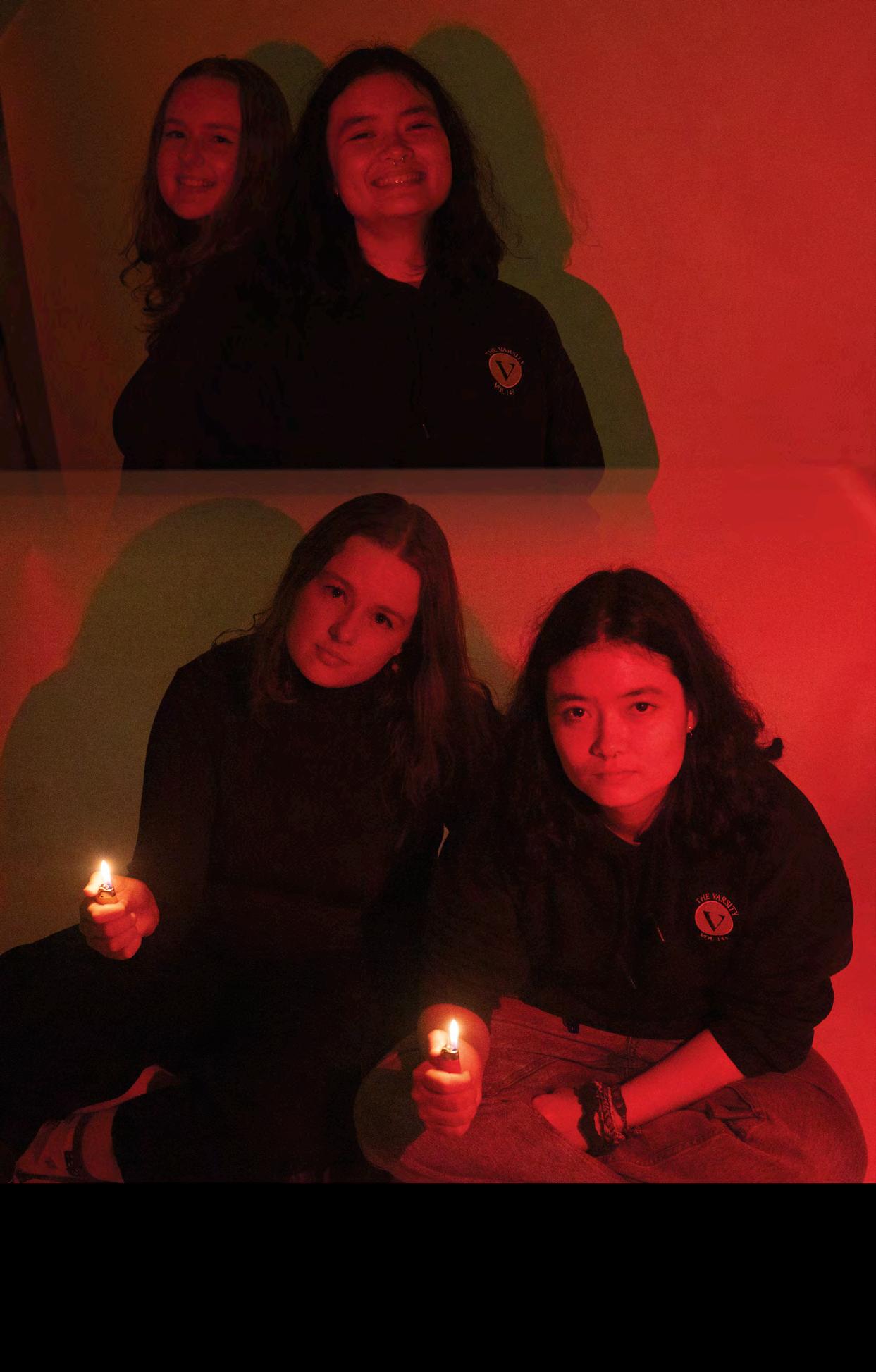



4 The Varsity Magazine Letters from the editors
The theme for this magazine, Flame, was not borne of rage. It was not borne of emotions so turbulent that they could induce seasickness. Rather, Flame came from me feeling completely numb.
Storytelling is my first love. I still remember the rush I felt when I weaved a story out of the fibres of external research and interview transcripts. Realizing that I wanted to write longform journalism as a career was one of the first and probably only true epiphanies I’ll ever have. However, I’m used to giving things my all, and throwing my entire being into everything I do. So much so that afer four years of doing that, I’ve forgotten about the consequences that come with being consumed by things you love.
The fallout of being consumed was being lef with nothing. I found myself too tired to do even the most mundane tasks, and every emotion that arose within me felt muted because I was too tired to feel anything. The most glaring example of this is probably the constant state of disarray that my bedroom has been in this school year.
To me, the theme of this magazine is about love — more specifically, it’s about the love I have for telling stories. For a terrifying few
weeks in January, I was so tired that I lost the ability to string words together into sentences. And when I found myself unable to write, I found myself on a frantic search for my lost love, for the hope that writing stories brings. For me, the process of making this magazine documented that search.
Despite it being the primary source of my exhaustion, storytelling is still what keeps me going. I guess I’m just so used to giving things my all that I forget that projects end but I remain. That even though my digital footprint on a newspaper’s website lasts forever, I have to take care of my finite, vulnerable self first.
I know that, even though my last project for The Varsity was borne of burnout and exhaustion, the sof glow of that love for stories will keep me standing. Thank you for picking up this magazine, and I hope that the stories you read here will remind you of the volatility of the things we love — the life-giving joy it ofen brings and the destruction it can leave in its wake.
— Alice Boyle, Magazine Editor-in-Chief
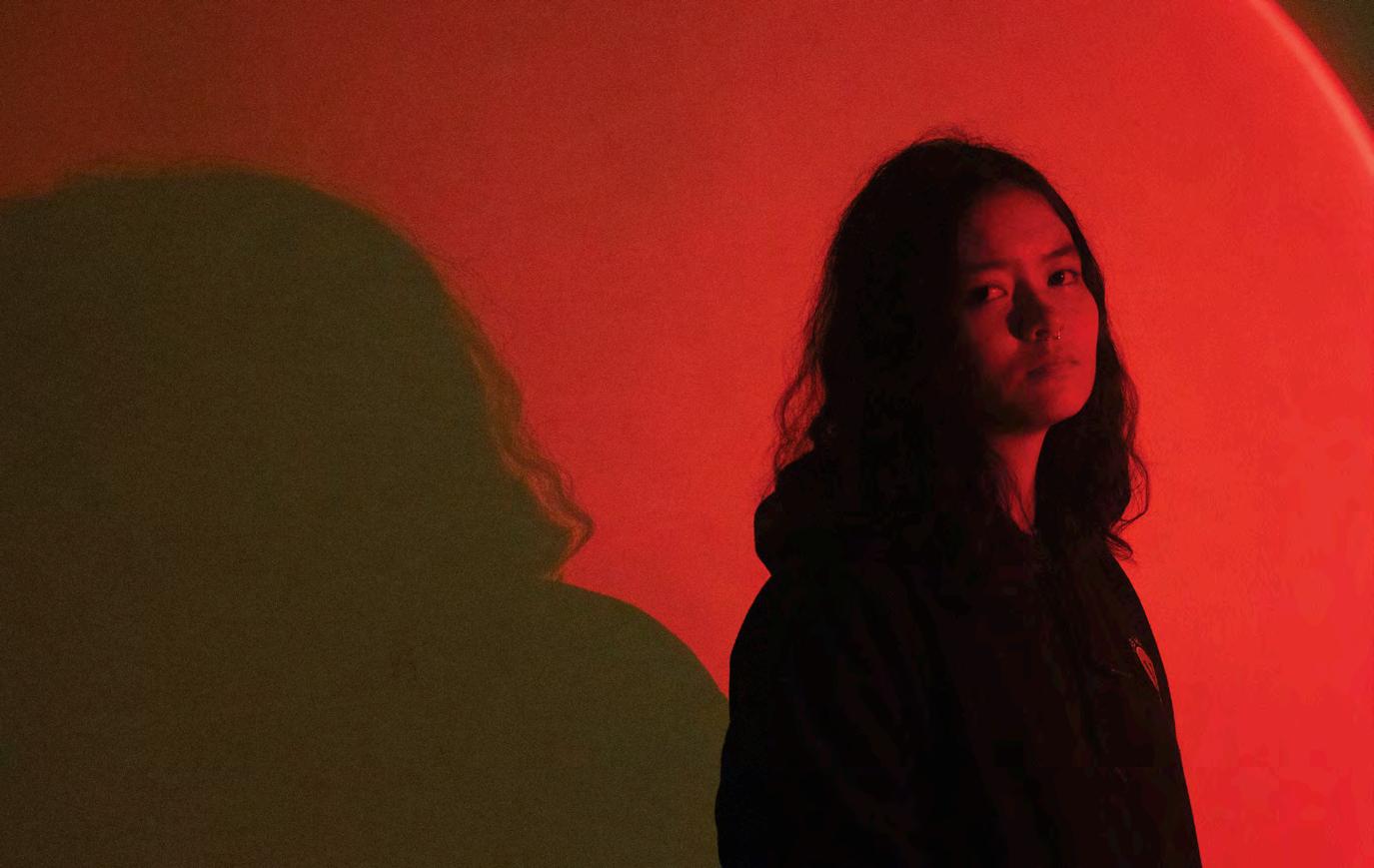

I kind of fell into involvement at The Varsity by happenstance.
My first year of university was full of lockdowns and missed opportunities. Taking photos for The Varsity was one of the few things I could do, and so I did it. At the end of the year, I found myself frantically writing a speech that I didn’t know I had to prepare minutes before I had to speak so I could become next year’s photo editor. I spent the first many months of that term diligently completing all of my work behind my computer screen, terrified of everyone around me, who all seemed so much more capable.
The following March, I experienced my first magazine production. Many late nights at our ofice and cold, windy days photographing things across downtown Toronto made for a stressful but endlessly fun several weeks.
I might have fallen into my first job at The Varsity by happenstance, but I stuck

around until now because I fell in love with the process of making a magazine that winter. Since then, I’ve tried many things, but nothing has felt as exhausting and endlessly joyful as making magazines.
This is an awful lot of self-reflection for a letter from the editor, but it’s because I’ve realized this is the last project I’ll ever put out at The Varsity. This is the last magazine I’ll spearhead for a while, if not ever, and well, I guess I’m feeling just a little bit sad about that.
It’s very fitting this magazine is called Flame, given it was through the last four magazines that I found something I felt passionate enough about to work tirelessly to complete. To me, Flame means finding the things you love so much that you are willing to be consumed by them. Through the pages that follow I hope you can get a taste for the joy that went into creating them.
— Caroline Bellamy, Creative Director
Winter 2024 5 Flame

Doukhobor organizers of the Burning of Arms in Kars province, 1895. (l-r) Ivan I. Planidin, Peter I. Dorofeyev, Grigoriy V. Verigin, Pavel V. Planidin, Semyon E. Chernov. Koozma Tarasof Collection.
The Doukhobor burning of arms
Writer: Justus Van Ewyk
Content warning: This article discusses violence, torture, and sexual violence toward women.
The events described in the article below are an iconic part of the author’s Doukhobor heritage, and various elements of the story are part of the oral and published history of the Doukhobors. For some of the specific details in the story, the author relied on the comprehensive article by Doukhobor historian D.E. (Jim) Popof, publicized as a four-part serialization in the Doukhobor periodical, ISKRA, beginning with Issue No. 2089, April 1, 2015.
Between 1899 and 1905, many Doukhobors arrived in Canada in a mass immigration, exiled from their homes across Transcaucasia, in the south of the Caucasus area. In the wake of their departure from the Russian Tsarists’ control lay the ashes of one of history’s greatest stands against violence, militarism, and war in three smouldering piles of rejected armaments. In the face of abuse, torture, and death, the Doukhobors refused to act against their beliefs and embodied values of truth, peace, and pacifism.
I am one of many Doukhobor descendants of those who participated in the Burning of Arms and survived to make a new home in Canada. Over the last several decades, the history of the Doukhobor has been largely forgotten by the general public, and those under 30 outside of the main Doukhobor settlements are likely
to have never heard the word ‘Doukhobor.’ The history of the Doukhobor is complex, tragic, and ultimately inspiring — and, in today’s increasingly aggressive global political environment, has never been more relevant.
While the treatment of the Doukhobor following their immigration from the Caucasus likewise deserves to be remembered and spoken of by both the Canadian people and the Canadian government, it is their life under the rule of Russia’s Tzars on which this article focuses.
As midnight struck on June 29, 1895, the Doukhobors would light the skies of three Transcaucasian regions with mass burnings of weapons that declared their refusal to comply with the Tsar’s military conscription, which opposed the Doukhobor faith.
This important moment marked the fulfillment of Doukhobor leader Lukeriya Vasilyevna “Lushechka” Kalmikova’s prophecy, translated to English by Popof: “The time would come when, with the help of a strong leader, the Doukhobors would make a decisive break with violence and war.”
Twenty-five years afer Lushechka made this prophecy, Peter Vasilyevich “Petyushka Gospodniy” Verigin would inspire the renunciation of militarism and the Burning of Arms, freeing his followers from military servitude to the Tsarist empire.
Background
Under the rule of Russian Tsar Alexander I from 1801–1825, the Doukhobors — a Christian people of Russian origin known for pacifism — were
granted a large expanse of land in the region of Tavria province known as ‘Milky Waters’ on January 25, 1802. Along with this land grant came some protection from repression and extermination by the Orthodox Church and State, as well as an exemption from military conscription.
However, from 1841–1845, the Doukhobors were exiled from Tavria following accusations from the Church, state, and surrounding settlements for “trying to convert the surrounding population.” Refusing to return to the Orthodox Church and comply with military service laws, the Doukhobors were forced into exile in Transcaucasia, where a life of peace remained decades away.
In 1874, conscription was introduced to the Caucasus and enforced on the Doukhobors by the Caucasus Governor-General — the commander-in-chief of the Russian troops in the Caucasus during the Russo-Turkish war. To achieve Doukhobor compliance with conscription and participation in the RussianTurkish War, the Governor-General informed Lushechka that if the Russian military efort was unsuccessful, the Turkish army might well invade Russian territory — and that meant Doukhobor villages would be subjected to rape and pillage should they not assist the Russians in at least a non-combatant capacity.
Lushechka reluctantly agreed to the Doukhobors’ non-combatant participation — a compromise that weighed heavily on her shoulders. Thus, in 1882, wanting to avoid another necessary but shameful surrender of her principles, Lushechka began teaching Peter Vasilyevich Verigin the Doukhobor ways, hoping he would be the leader she had prophesied.
6 The Varsity Magazine From fre with peace
A new leadership
Following the passing of Lushechka on December 15, 1886, the majority of her 20,000 followers acknowledged the leadership of Peter Vasilyevich on January 26, 1887. The approximately 4,000 who did not were led by Ivan Baturin and Alyosha Zubkov, and headed by Michael Gubanov, Lushechka’s brother. Henceforth, these Doukhobors would be known as the Gubanovtsi or the ‘Small Party.’
The Gubanovtsi, as the ruling bureaucracy, were interested in preserving the status quo and induced the authorities to arrest Peter Vasilyevich at the very moment he was proclaimed the leader. Petyushka Gospodniy, at the age of 27, was subject to imprisonment and exile for over 15 years. Despite this, those who recognized Petyushka Gospodniy remained loyal, adhering to the messages he was able to send during his lengthy detainment.
On November 8, 1894, the annual commemoration of the Archangel Michael commenced. On this day, Petyushka Gospodniy’s followers were asked to adapt their daily practices in the name of their faith: at the counsel of Petyushka Gospodniy, most of his followers ceased consuming meat, alcohol, and tobacco, in addition to stopping the procreation of children in preparation for the challenges they foresaw.
Approximately 4,000 of Petyushka Gospodniy’s followers were not interested in making these changes and broke of under the leadership of Aleksey Fyodorovich Vorobyov to form the Vorobyovtsi or the ‘Middle Party.’ The 12,000 who remained loyal were known as the Verigintsi, or the ‘Verigin Party.’ It was the Verigintsi that would later take part in the Burning of Arms.
In autumn of 1894, Petyushka Gospodniy sent

his older brother, Vasiliy, and community elder, Vasiliy Gavrilovich Vereshchagin, to discreetly spread his instruction that on June 28, 1895, the Verigintsi were to gather all the weapons in their possession and destroy them by fire.
Petyushka Gospodniy also suggested that young Doukhobor men in active military service could announce their refusal to continue serving on Easter Day. Matvey Vasilyevich Lebedev was the first of many brave Doukhobor men to assert their refusal to bear arms and continue military participation; ten fellow Doukhobors in his company followed his lead, thus sparking the events that culminated in the Burning of Arms.
In the face of abuse, torture, and death, the Doukhobors refused to act against their beliefs and embodied the values of truth, peace, and pacifsm.
These first 11 men would not return to service, remaining dedicated to the principles of their faith and Petyushka Gospodniy’s leadership. For their refusal, the young Doukhobor men were arrested and subjected to solitary confinement and constant threats; beatings; physical and psychological torture; and mock executions in the Penal Battalion. Yet the men would not break, persevering through repeated floggings of minimum 30 strokes and up to a shocking 120 — with their fellow Doukhobors as a forced

audience of the torture. Afer flogging, the men were sequestered in isolation with only the company of insects, rats, and festering wounds.
Of the first 11 men, Mikhail Mikhailovich Sherbinin was the first to die for his beliefs. An estimated 300–400 Doukhobor men would follow the fate of the first 11 over the next three years, between 1895–1898, eventually being exiled to Siberia as religious sectarians. Dozens of pacifist Doukhobors, particularly young men, would lose their lives in their resolute stand against militarism.
The Burning of Arms
Meanwhile, June 28, 1895, finally came: at midnight and well into the hours of June 29, the Burning of Arms commenced simultaneously in the regions of Kars, Elizavetpol, and Kholodnoye. The Doukhobors were asserting their faith and beliefs in what I see as one of history’s most remarkable stands against violence and war.
In the Kars region, under the oversight of respected elder Ivan Ivanovich Oosachyov, Petyushka Gospodniy’s younger brother Grigoriy Vasilyevich, along with Ivan Ivanovich Planidin — my direct ancestor — as well as Peter Ivanovich Dorofeyev, Pavel Vasilyevich Planidin, and Semyon Efimovich Chernov prepared to burn all the Kars Verigintsi’s armaments. The fire was lit. As it grew, burning the weapons, hundreds of gathered Doukhobors stood surrounding the blaze, singing and praying in a protracted moleniye (mass) that went on continuously until noon the following day. In Kars, the Burning of Arms was a success.
In Elizavetpol, the Verigintsi faced opposition from the Gubanovtsi, who informed authorities of the Verigintsi’s plans. As a result, local police, Cossack cavalry, and mounted frontier guards (Lef): A family photo c. 1920. The man on the lef is Matvey Vasilyevich Lebedev. Next to him is his wife, Vasilisa Nikolaevna, and their three children (l-r) Agafiya, Marya, and Vasya. Courtesy of BIRCHES Publishing.
(Right): Peter V. Verigin (sitting) in exile, c. 1890. With him (l-r) are his brother Vasily, sister Vera, and Vasily Obedkov. Koozma Tarasof Collection. From Confessions of a Doukhobor Elder, Doukhobor Heritage, doukhobor.org.
Winter 2024 7 Flame
were present at the Elizavetpol Burning of Arms and proceeded to arrest, beat, and lash the Verigintsi participants. Approximately 100 men were arrested, 80 of whom were men who threw their reserve tickets — conscription tickets that identified the Doukhobor men with an active role in the Tsarist military — at the feet of the Tsarist oficials. The others detained were elders identified as ringleaders. Still, the worst repercussions came to those in the Kholodnoye region, which had the largest population of Doukhobors, including the largest population of Gubanovtsi.
Like in Elizavetpol, the Gubanovtsi sought help from authorities — such as the regional governor — to intercept the Verigintsi, as the Gubanovtsi were paranoid that the Verigintsi were preparing to attack them. The governor accepted this and sent a Cossack troop led by Captain Praga to investigate. Upon locating the Doukhobors and observing them in prayer, Praga requested they accompany him to see the governor. The Doukhobors refused, as “they were in the middle of a prayer service and could not leave.”
Unable to sway the Verigintsi, Praga attacked. Initially unsuccessful in trampling the Verigintsi under the Cossack horses, Praga viciously lashed the Verigintsi with a nagayki — a military whip of long leather lashes with lead tips — ripping at all those it struck.
To prevent further violence, the Doukhobor elders agreed to see the governor. Praga and the Cossacks continued to use the nagayki on the journey back. Some soldiers dragged the women, who refused to leave the men, by their hair when they fell behind. Still, as the Verigintsi walked, they sang a psalm and did not give in to the cruel treatment.
When the herded Verigintsi reached the governor, they unexpectedly escaped further immediate violence at his hands; the Verigintsi were ordered to their homes to await further instruction, but they were not safe yet. Kholodnoye Doukhobor villages were occupied for two weeks under martial law, by order of St. Petersburg. Under this period of martial law, Praga and the Cossacks had permission to act as judges and executioners, determining what constituted both insubordination and punishment. Beatings, public floggings, and the rape and gang-rape of women and girls occurred over this period; young men who discarded their reserve tickets and elder ringleaders were sent to penal battalions while all others were told to “pledge allegiance to the Tsar… [or] lose all normal citizens’ rights and be subjected to mass internal exile.”
None of the Verigintsi agreed, and

approximately 4,500 of the Kholodenskiye Doukhobors were exiled, isolated from all others, and forbidden from receiving help from anyone willing. Consequently, malnutrition, poor hygiene caused by inadequate shelter, and drastic changes in these groups’ surroundings led to the spread of disease. Between 1895–1899, an estimated 1,500 Verigintsi Doukhobor lost their lives because they refused to abandon their beliefs and surrender to the violent demands of the Russian Tsar.
A new life
World-renowned writer Lev Nikolaevich “Leo” Tolstoy’s eforts to draw attention to the treatment of the Doukhobors, helped raise funds for the Doukhobor exiles to immigrate to Canada via the publication of his Resurrection (1899). There, they hoped they would be allowed their communal lifestyle, exempt, unconditionally, from military service. During 1899–1905, over 8,000 Doukhobors of the Verigintsi Party had immigrated to Canada.
Although this would not be the end of their struggles, the Doukhobors had done what so many could not; facing war and violence, the Doukhobors said, ‘No, we will not betray our values — we will not save our lives at the cost of another’s.’ With the fires that destroyed their armaments, the Doukhobors emphatically manifested their refusal to accept anything less than a peaceful,
Five photographs in one frame: Peter Verigin, 1881–1939 (centre), Peter Verigin, 1859–1924 (top right), Lukeria Kalmykova (top lef), Leo Tolstoy (bottom lef), and one Doukhobor woman (bottom lef), c. 1925
Courtesy of Doukhobor Collection of Simon Fraser University.
community-based existence. With their strong conviction, the Doukhobors lef a legacy of non-violent resistance to militarism and war unparalleled in history.
In the decades following the Doukhobors’ settlement in Canada, mainly in Southern British Columbia and Saskatchewan, those who reside outside of the regions called home by Doukhobor descendants have largely forgotten the stand bravely taken against forced participation in the Tsarist military, much less remembered who the Doukhobor are. In today’s political climate, as tensions amongst nationstates continue to escalate, now more than ever, the historical actions of the Doukhobors cannot be forgotten.
For those unwilling to live in a world fraught with seemingly never-ending conflict, the bravery, strength, and resilience of the Doukhobors during the Burning of Arms — as they held strong against military servitude to the Tsarist empire, withstanding immeasurable violence while maintaining their conviction — is an event to inspire, and a model to follow.

8 The Varsity Magazine From fre with peace
 Writer: James Bullanoff
Illustrator: Medha Surajpal
Writer: James Bullanoff
Illustrator: Medha Surajpal
IDeath of a performance actor
A journalist’s memoir of switching majors

never thought of myself as a writer. Those who know me well probably wonder why I keep reiterating this, but for context, I never had faith in my writing ability. I always assumed that my low high school English grades translated to my writing. Little did I know that the thing that would drive my future passions — the flames that burn inside each of us — would be writing.
Throughout my journey to discover what I was truly passionate about, my passions changed constantly. I would jump around between diferent fields of science, and there was even a time when I believed that theatre would be my passion — a fact that ofen shocks people to this day. But then COVID-19 happened — the virus that completely reshaped the world in many drastic ways, from impacting business and schools, to changing the way we spend our time.
While many expressed disdain for the pandemic, I saw the brighter side of it. I took a break, worked for a year, and came back to UTSC, where I discovered a new door waiting for me to be opened. Eventually, I found a new passion.
I started to think about this, the idea of changing passions, and what must’ve been a feeling that I’m sure many others faced. In an institution so focused on grades and a belief that a piece of paper would shape your future, I figured it was about time I told the story of how a theatre kid became a journalist.
Setting the stage
My passion for theatre started at a young age, when I would watch movies with my parents and recite every line characters would say. I had played around with the idea of becoming an actor until I fully committed in high school to pursue it.
I still remember the fondness I have for being on stage. I was Shakespeare in The Complete Works of William Shakespeare (Abridged), and I was almost Warner for Legally Blonde, the musical. While I didn’t have an extensive
background in plays, these moments really made me excited about the industry.
The only problem was that a global pandemic happened: for many, this completely reshaped their entire worlds, and for me, it caused me to question my last year of high school. All of my classes were moved online, and theatre just didn’t feel the same.
This is where my doubts kicked in once again. Taking a gap year and getting accepted to UTSC made me realize that it might be time I explore other options. This would be the starting point for how I discovered writing.
Changing course
The phenomenon of experiencing a drastic change is not unique to me. Barry Freeman, an associate professor of theatre and performance studies at UTSC, spoke to me about how he discovered theatre and stuck to it.
His story began as a UTSC student studying astronomy. Afer being dragged into a play by someone in high school, he decided to take a theatre course early on in his undergraduate degree. One thing led to another, and he eventually developed a greater passion for theatre.
However, job security is ofen a big hurdle when considering long-term careers. Freeman mentions that there is a perceived security with occupations in the sciences, but a perceived insecurity with careers in the arts.
“If you [start with] an idea that ‘I’m going to work in the sciences somehow’… you couldn’t imagine a more precarious, less paying, not very solid career to go into than theatre,” he said.
A 2019 study published in Nature Communications that collected data from actors listed on IMDb found that 90 per cent of TV and film actors are unemployed at any given time, while just two per cent actually make a living in the profession. Since roles only last so long, many have to take on side jobs in order to make a living.
And in an ever-changing economy riddled with problems such as grocery bills and housing prices that seem completely unattainable, money is essential. So when some people choose their degree, they choose what seems financially viable and stable — instead of pursuing our passions, we decide to play it safe.
Despite all this in mind, Freeman still chose to take the harder option. “It wasn’t a choice for me… When I was in the theatre, [it was] very clear to me that I need[ed] to keep doing this. It’s that simple… I just was so enthralled by the challenge of it.”
People spend a huge chunk of their life working. The average American worker spends 34.4 hours per week working. That’s roughly 90,000 hours at work over your lifetime, meaning people will spend a third of their life at work. So while finding a job you enjoy seems obvious, it’s the leap of faith that scares people.
“People think of their whole education this way… ‘I get my degree, and then I’ve got the thing. Here’s my thing. Okay, what comes next? What door does this open for me?’ And I tried to just shatter that idea,” said Freeman.
Breaking news
Similarly to Freeman’s story, I took a few writing courses in my first year and discovered a new program that I instantly fell in love with — journalism.
If I wanted to work in journalism though, as professors and special guests in the journalism sector told me and my classmates, it was crucial to start writing as soon as possible. If I wanted to get anywhere in this industry, I needed to act fast. That was when I first heard about The Varsity I still remember my very first article: I wasn’t even close to being a news reporter yet, so I took a pitch from the arts section about Elon Musk taking over X, formerly known as Twitter. This would be the lighter fluid that sparked my fire for writing.
My time at The Varsity has shaped not only my reporting but also my experience in journalism. I found this new obsession with telling stories and keeping up to date with current news events. I love my job, and reporting for the Scarborough community as the UTSC Bureau Chief has given me some of my best experiences in the university career so far.
Even as a journalist specialist at UTSC, all I eat, sleep, and breathe is news. I look forward to the internships and assignments that get me out in the field and am thankful for the opportunities to do so.
Winter 2024 9 Flame
While it’s worked out for me so far, journalism is not for the faint of heart. There have been mass layofs in the industry recently, such as the 600 people terminated from Metroland Media Group or CBC/Radio-Canada’s cutting of 10 per cent from its workforce due to budget shortfalls.
The Canadian media landscape isn’t particularly an inviting one, either, especially with the ongoing battles of Bill C-18 and the Federal government’s fight for news organizations to be paid for their links.
With all this, the idea of working in the industry becomes an unpleasant thought. While the passion is there, ofentimes we realize that things change. One of my coworkers, Mekhi Quarshie — the managing online editor here
at The Varsity and last year’s sports editor — spoke to me about his experiences moving up the ladder and his own personal growth throughout the years.
“I almost lost my love for writing. Ever since the end of my sports editor year till midsummer, I didn’t write that much. Because my job didn’t require it and I just didn’t know what I would write about,” said Quarshie.
Discovering that one of my colleagues felt like they were losing their touch really surprised me at first. It wasn’t until I reflected on my own changes that I realized that, for some, the same passion that I felt can fade to embers.
“When you’re an associate, when you’re an editor, you’re writing the articles, you’re coming up with the ideas. But then when your
paycheck starts to increase, your creativity starts to decline… there’s not that pure joy that I had as a sports editor,” Quarshie said.
Quarshie felt that in an industry with too much turbulence, he couldn’t fully commit to it. “I wish I could be super gung ho on journalism and only think about my passions. But for me, I have to also think about the money.”
Even those studying the program are facing dificulties. Back in November, Humber College announced it would be pausing its journalism program amid low enrolment and a changing landscape. While it hopes to start up again in the future, it’s devastating to the new generation of journalists to learn just how tumultuous journalism programs themselves are.
Even though Quarshie works for The Varsity
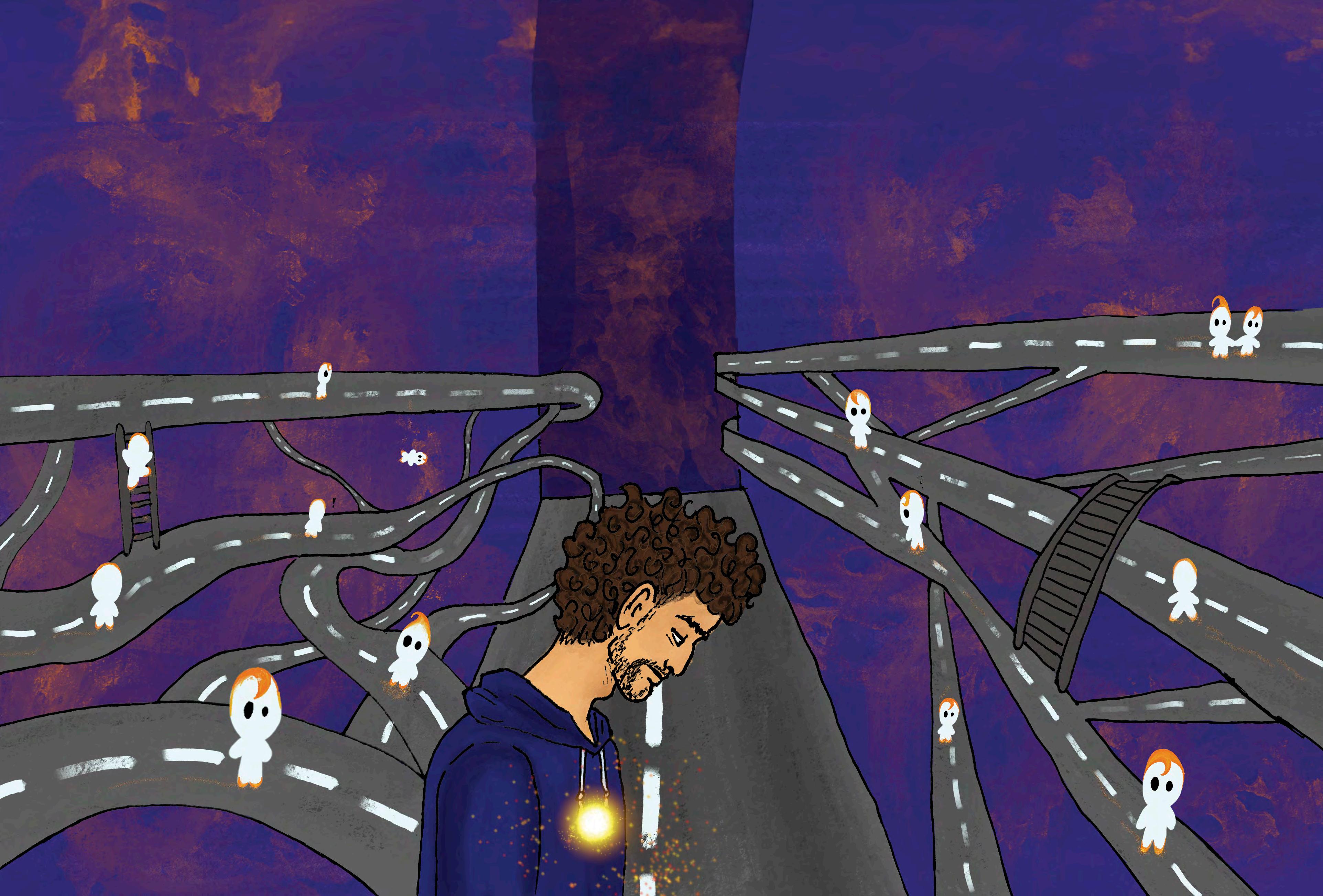
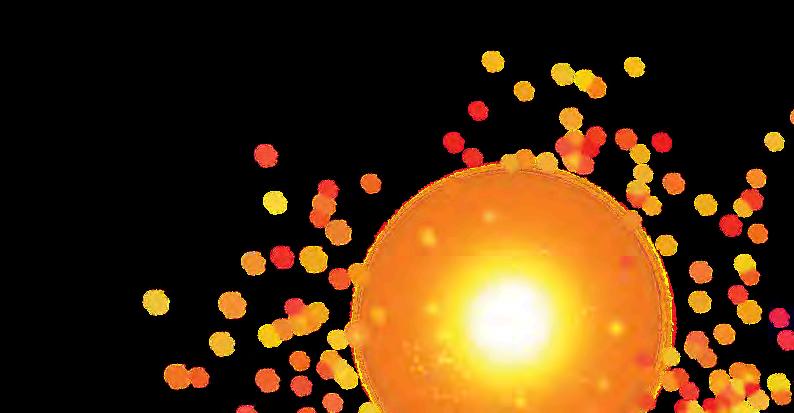
10 The Varsity Magazine
Death of a performance actor
and published a piece this year for the Toronto Star, his passion still difers from what he wants to pursue as a career. “I love journalism, but I’m not the type of guy that wants to be scrambling for a job afer I graduate. I really [like] stability.”
Three-quarters into a double major in journalism and political science, he still has the idea in his pocket. However, the job security that some programs provide does exist, and many base their choices on what uncertainty they can handle.
The path ahead
In writing this, one of my biggest takeaways is
realizing just how much experiences can shape our passions. Each person has a unique set of circumstances that leads them onto a path, to a goal that they pursue. No matter where the path goes or what’s in store, everyone takes it, and everyone does things when they need to.
Becoming a journalist was, by all definitions, an accident. I’ve had the honour of meeting an incredible array of reports and instructors who have shaped me on this path. It was never something I planned, but it was definitely what found me. In a time of uncertainty, I made this weird thing work, and so far it seems to be the

thing I will be obsessed with for the rest of my life. Passions will constantly come and go; learning that is really what university is about. Even when things feel uncertain, we all find our path eventually. No one degree will make or break you, but I think it’s about finding what you enjoy and sticking to it. No matter what your path is or how jagged your road gets, I encourage you to keep walking, because eventually you will find your own flame.
Disclosure: James is the UTSC bureau chief for The Varsity.

Flame Winter 2024 11
Writer: Chris Zdravko
Spicy food
Strengthening myself with spicy food
Photographer: Ashley Jeong
Ihave developed a burning passion for hot foods, more so than many.
As a child, if I misbehaved, my Mum would threaten to put pepper in my mouth. Eventually, she did. I think I cried.
Whenever I watch Hot Ones on YouTube, the show where the host interviews celebrities while they devour spicy wings, I think about the thrill of being a guest. I would love it. Most celebrities take a single bite of each wing. I would eat them all to the bone. Practically all those sauces look delicious. I would not hold back on the milk though.
I love Osmow’s. When I eat there, I order ‘Scorchin’ Hot’, the hottest spice level. Every time the restaurant staf expresses concern for me, I reafirm to them that I want a big kick. Yet, when my food comes in, it’s not as spicy as I would have liked. I recall a year or two ago, when I was ordering vindaloo at an Indian restaurant, the waitress assumed I wanted mild spice. I had to confirm with her that I wanted it spicy. I recently asked my Mum to pick up Tabasco sauce from Costco, and I have been throwing it on many meals, from sausages, to salmon, to potatoes, to salad.
I have many anecdotes about my love for spicy food, and many can say the same. Our afinity for hot peppers as humans intrigues me. Why do we enjoy eating things that set our digestive systems on fire? Why eat plants that cause pain?
I have researched the topic thoroughly, spoken with food experts,
and tried unique spicy dishes in the GTA to try to answer these questions. Throughout my journey, I learned that our love for spicy food ranges across cultures and flavours, and for many, eating hot foods is a form of pride.
Scoville science
When discussing peppers, it is useful to know two things: what makes them hot, and their
feel when we eat them. The more capsaicin in a pepper, the spicier it will be. This chemical is also the main ingredient in police-grade pepper spray.
In 1912, American pharmacist Wilbur Scoville invented the Scoville Scale to quantify a pepper’s heat level. He created an experiment and called it the Scoville Organoleptic Test. To conduct the test, you need a pepper, an

12 The Varsity Magazine Spicy food
the capsaicin from the pepper into an oil using the solvent. Then, you add a drop of the oil to the tongues of the tasters. If they taste heat, you add some of the sugar water to the oil. Then you keep diluting by a regular amount until none of the tasters can taste the heat. Scoville assigned a jalapeño an SHU of 10,000, meaning he had to dilute it 10,000 times before nobody could taste any heat.
The problem with Scoville Heat Units is that they are based on subjective measures. People have varying spice sensitivities, based on varying exposure to spice and genetics. Peppers also vary depending on their growing conditions, age, and lineage. A jalapeño grown in Mexico may taste diferent from a jalapeño grown in China. A pepper’s SHU is more of a rough estimate than an exact calculation. Scientists have come up with a more objective test for measuring capsaicin levels, called high-
The #Onechipchallenge received over two billion views on TikTok. It features internet users of all ages eating the spicy chip and enduring the dreadful heat with entertaining reactions.
“People [take] pride in the fact that they can wolf down food that makes other people burst into tears.”
The chip and any food with an SHU of one million or higher are no joke. There have even been instances of teens and adults possibly
spice. Some say sweet food helps too. Pepper junkies should have these by their side when they are about to battle the heat of a super spicy food.
Capsaicin culture
Dylan Clark is an anthropology professor at U of T St. George with expertise in foodways, meaning the eating habits and culinary practices of people, regions, or historical periods. He is also a spicy food lover. In an interview with Clark, he told me that food is universal in cultures around the world, and it doesn’t just have to do with sustenance. “People see themselves in food. They see gender, race, and religion,” he said.
On the universality of spicy food, Clark commented that “it is a form of food that people naturally find challenging to eat, say, when they are two years old… but then learn to like it.” Clark discussed how in some countries and cultures, parents ofen raise their kids with hot food as a regular part of their diet. This allows kids from these cultures to build a resistance to hot food from a young age, and become more tolerant of it than kids from other parts of the world.

Spicy foods do have their health benefits. Chili peppers, for example, have antibacterial and anti-inflammatory properties. They also can speed metabolism, reduce muscle inflammation er workouts, and promote brain health.
Clark observed that not only is spicy food universal but the ability to endure it is a source of pride for many cultures. “People [take] pride in the fact that they can wolf down food that makes other people burst into tears. It’s a marker of ethnicity and nationality — because it excludes people. Because some people literally can’t handle the heat.”
When I asked Clark about the connection between hot food and masculinity, he said that gender is a performance that people play, and that “people use food as a vehicle to perform those things.”
He discussed how foods in some cultures are seen as feminine, like ice cream in Japan. “In some contexts, people think that spicy food makes you a man. In some contexts, they don’t. In France, eating spicy food doesn’t prove you’re a man. A lot of French people
Winter 2024 13 Flame
that I know think that spicy food is low-quality cuisine.” He told me his French friends enjoy meals that are fine-tuned to satiate their taste buds rather than meals overloaded with spices, which may be deemed “lowbrow” or “lacking artistry.”
Clark reminds me that these cultures are diverse, and there is no country where everyone likes or dislikes a particular food.
When I interviewed Canadian food journalist, David Sax, he commented on perceptions of a new interest in spice. “Spicy food is nothing new. What’s new is a cross-cultural interest in it, and a persistent hunger from diners, shoppers, chefs, and food brands for a new way to spin a take on spice. So each season you get a new spice flavor profile [like gojuchang or ghost pepper] and a new application for it [like] an interesting drink at a cool cocktail bar or a new flavor of Doritos.”
“People eat with their imaginations and food trends have this way of sparking that imagination over and over again. It keeps it fresh, even if the basic taste remains very similar. So today, it’s sriracha, yesterday was Tabasco, and maybe tomorrow, it’s zhug. That’s what makes modern eating and cooking and food culture interesting. It doesn’t stay still.”
Hunt for heat
My interest in spice doesn’t stay still either. Si Shuan, or Szechuan peppercorns are notorious for their unique flavour, a mix of spice with numbing properties. I tried it for the first time at Magic Noodles on Harbord Street. I ordered their Szechuan Friar, and it was like nothing I’d ever tasted before.
The dish was made with noodles, bok choy, chicken, onion, carrot, and green pepper, mixed together and seasoned with Szechuan pepper.
In the first bite, I tasted the heat, but at the same time, I felt the Szechuan’s cooling, numbing, almost minty properties, allowing for a great blend. Kind of like fire and ice. It was delicious. I felt a tingling sensation in my lips. The noodles tasted like magic. It also paired well with the Chinese beer Tsingtao, which tempered the spice.
Duf’s Famous Wings on College Street is known for its signature hot sauces, Death and Armageddon, which originated in Toronto. Their “Wall of Pain” encourages brave people to take on spicy wing-eating challenges. The record for most Armageddon wings eaten is 69.
The Dufney family started the company in 1946 as a tavern in Amherst, a town north of Bufalo, US. In 1969, the family began selling chicken wings, which people hailed as the best in Bufalo. Because of its closeness to the Canadian border, the restaurant was popular
among Canadians. Twin brothers Hy and Rob of the Erlich family approached the Du to discuss expanding their restaurant into Canada. In 1998, Du in Toronto, bringing their beloved sauces from America. Today, there are three Du branches in Ontario, and two of them are located in Toronto.
Loren Erlich, the manager of Toronto’s College Street location, told me the Death and Armageddon sauces are a family recipe made of a variety of peppers, including habanero and scotch bonnets.
“Our Death and Armageddon sauces were added features to the menu when we opened in Toronto. At the time, super hot was the hottest sauce, and there’s a lot of multiculturalism in Toronto, so there were some cultures that didn’t find the super hot hot enough. So my mum and my aunt started working on recipes to develop that.”
It has been a heated journey as I searched the GTA for hot food and spicy perspectives. I wish I was able to find some Bird’s Eye chilis, habaneros, or scotch bonnets, but that might just be a tale for another time. I’m glad I was able to learn so many new things about hot food, try the hottest wings I’ve ever had, and experience the magic of Szechuan cuisine. I will admit: handling
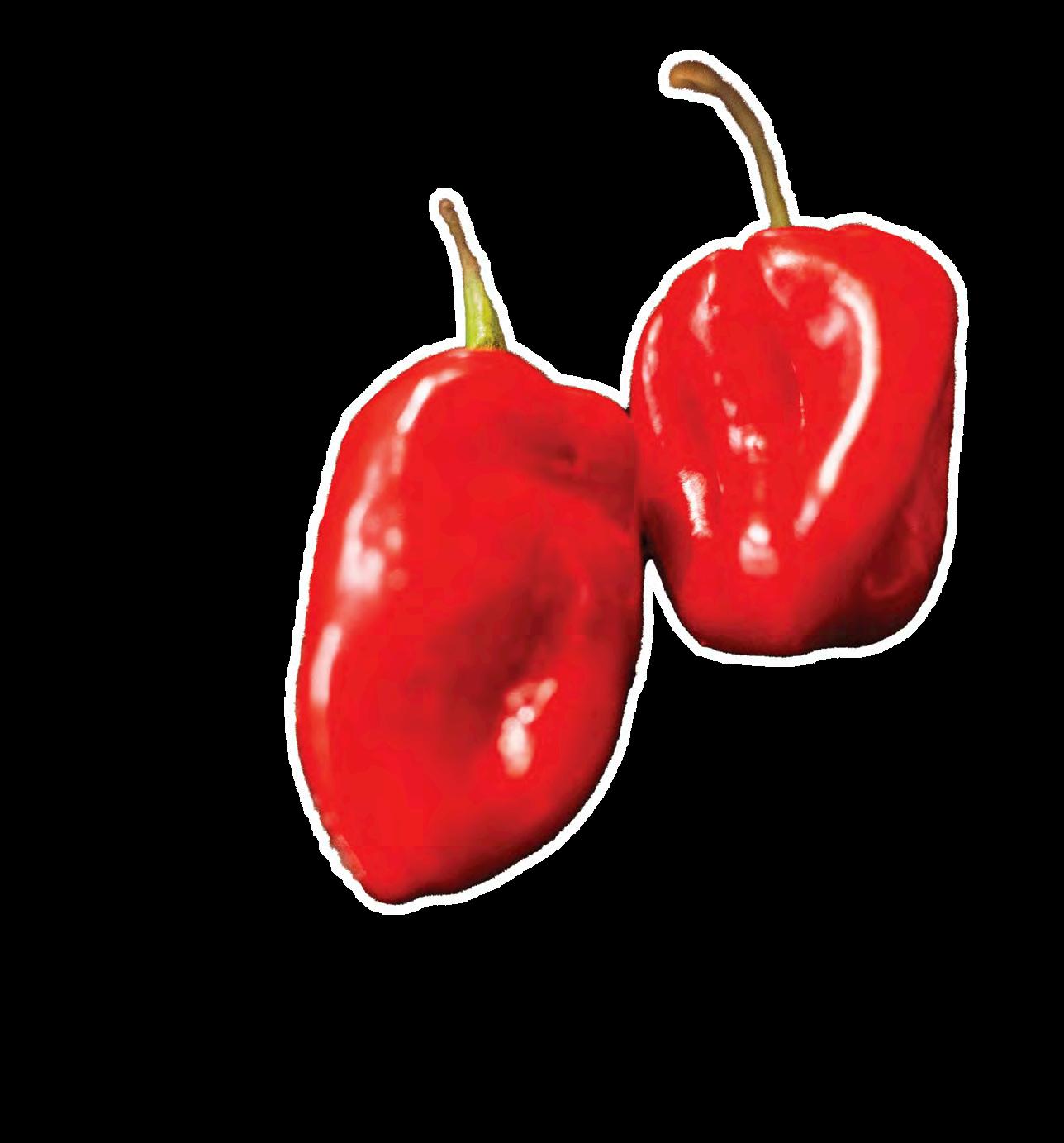



14 The Varsity Magazine Spicy food


Book bannings matter, and Canadians need to take them more seriously
Writer: Philip Harker
Photographer: Ary Kwun
If you’re reading this, you probably haven’t been in a public school for a while. So here’s a refresher on an all-too-common occurrence in schools: sometimes, parents make a fuss upon learning which books their child will be reading. For whatever reason, they may find the content or themes of a novel highly objectionable and make a complaint about, or ‘challenge,’ the class’ reading material. And sometimes, they will win that ‘challenge,’ and the book will be banned from the school’s circulation.
It’s not just parents who challenge books. Sometimes outside organizations initiate book bans, such as religious or political interest groups that may or may not actually have a student in the classroom.
It’s also not just classrooms. Books are challenged in school libraries as well as in public and academic libraries.
We know of these statistics thanks to data collected by the American Library Association’s
(ALA) Ofice for Intellectual Freedom — the oldest and largest library association in the world. Established in 1876, intellectual freedom is one of eight key action areas that the ALA focuses on. Since 1990, it has been documenting book challenges and bans across the US, bringing the act of book banning into the limelight of today’s politics. But it’s also wrong to imagine this movement as being a purely American issue. The Canadian Federation of Library Associations — a nonprofit that serves as a united voice for Canada’s library community — has its Intellectual Freedom Committee, and though its data is sparser and needs to be made more available, it documents many challenges to books from libraries across Canada.
I feel like only a certain type of person seeks to control the free flow of information and intellectual discourse, usually by stamping out information and ideas that they dislike. Unfortunately for them, the laws of free
speech and expression make it dificult for governments to censor published work.
I am under the impression that these people have a very strong belief in how the social order should be structured. They are not interested in debating or arguing with the ideas at play. They are only interested in blocking these ideas and making them inaccessible to protect their vision of the social order. So they grasp at straws, trying to enforce this non-access through the few means they can.
Some would call these people “fascists.” Personally, I prefer to refer to this type of character — the type that writes heated letters about The Glass Castle or shows up to a school board meeting to complain about a Toni Morrison novel — by a diferent name. These people are anti-intellectuals.
There’s not really a better way to describe them. The type of people who think that some literature needs to be sequestered away, that some knowledge must be controlled by a
Winter 2024 15 Flame

select few — these people are free-thought opponents of the highest order. I don’t think they care for the well-being of children or the good of the public discourse. They seem to believe that humanity’s best path forward is through a top-down control of the narrative and the suppression of critical thought.
If book challengers really had any belief in learning and intellectual discourse, they would trust teachers and students to come up with sound conclusions on their own. Anti-intellectuals are quick to argue that they don’t trust teachers because they don’t want their children to be indoctrinated by politically motivated educators. I think we adults have far too little faith in the youth and their capacity for complicated thinking. No teenager is going to read Looking for Alaska and decide to go out and have bad and unenjoyable oral sex, nor are they going to read accounts of Vietnam in I Know Why the Caged Bird Sings and engage in “antiwhite” behaviour — whatever that means — as some Maryland teachers phrased it in a 1998 challenge.
Literary depictions of sex, racism, gender, abuse, drugs, and other such subjects don’t directly inspire devious or immoral actions in youth. This is a lie that was made up by anti-intellectuals to control education to suit their agendas.
The initial problem with this logic is so obvious to me that I’m honestly surprised more people don’t bring it up: it presupposes that kids get their information and their worldviews exclusively from the books in their school libraries. If you seriously believe in the argument that ‘bad books cause bad behaviour,’ you also believe that books are the primary driver shaping youth culture.
According to Pew Research Center, nearly 30 per cent of American youth between 13 and 17 “never or hardly ever” read for fun. The conversation about the decline of reading is much older than the current day, and young people seeking entertainment have more options than ever before — TV shows, movies, video games, and also more recent cultural movements like social media and online streaming.
If any format of media is having a serious impact on youth, it’s not books. For every “immoral topic” that might be argued to appear in a book, it has just as many appearances on TV, in movies, and on YouTube or TikTok. So the crusade against books in specific seems just a tad disingenuous.
That said, many book challenges don’t arise from school libraries. They come from
classrooms — generally, English classes in which the challenged books are actually required reading for the students.
There’s a common trope of English teachers being esoteric in their interpretation of literature. The old joke, “Why are the curtains blue?” — a hapless English teacher trying to get students to uncover the literary significance behind a set of blue curtains, where, in fact, the curtains were just blue — comes to mind, exemplifying the stereotype of teachers forcing kids to seek literary meaning where none actually exists.
But so much of literature’s value lies not in these superficial analyses but in how fictional stories align with our own stories in the real world. Literature is supposed to challenge us and help us imagine the world diferently. Great books ask how sure we are of the world and how we fit into it, and then they ask us why.
“Intellectual freedom needs to become a better-known issue.”
It’s tempting to argue that books are just entertainment pieces — distractions like any other. And though some books certainly have more intellectual value than others, that ruling is not for the masses to make. It’s for educators — the professionals we employ decide which works are better suited for a classroom. If teachers cannot be free to make these choices, education as a whole will sufer.
The kinds of topics that cause antiintellectuals to challenge books are ofen things that they find inappropriate — sex, drugs, and the like. I can admit that this is noble, but it is misguided. As we’ve discussed, such depictions don’t provoke bad behaviour. In fact, they’re ofen meant to do the opposite.
If literary education aims to help students understand the world, then the literature they study has to actually include issues from the real world. In real life, lots of people have marginalized identities that shape their experiences in the world. A lot of people have substance use disorders, are locked in abusive relationships, or have unhealthy relationships with sex and attraction.
These are real challenges that students will confront in their lifetimes — perhaps the greatest challenges they will face, greater than any algebra problem or chemistry lab. Classrooms ofer kids a chance to learn about these challenges in a safe environment so they can think about them critically before
they enter adulthood. Kids who learn about the evil of racism or the immense sufering of addiction are going to be better equipped to understand them in the real world than the ones who are shielded from these ideas.
But anti-intellectuals are unwilling to consider this. They have a worldview to maintain for themselves and others. They suppress inquiry and curiosity because they are utterly terrified that the new generation might enter the public conversation with ideas — generated by critical thought rather than propaganda — that stand in opposition to their own.
The emergence of public education, this idea that everyone should receive free schooling, was an enormous achievement in our history. Education is about far more than the learning and success of any student; it’s also about the rest of us. In the long run, everyone benefits from a population of welleducated people who can think critically about themselves and about the world.
Anti-intellectualism spits in the face of this achievement. Behind the euphemistic shield of “protecting students,” anti-intellectuals seek to insert an agenda at the expense of the integrity of education. When parents, administrators, and lawmakers allow antiintellectuals to enforce changes to classroom materials, it sets the precedent that politics should be allowed to permeate classrooms.
This isn’t speculation. For example, Florida saw 194 books challenged across various schools in the first eight months of 2023 — and conservative politicians have also spent the last year hammering away at high school Black history courses, as part of a larger efort to restrict education on marginalized races and genders in the country.
If we allow politics and reactionary movements to directly change how schools operate, we are betraying the core value of public education. Young people whose education is being curated by antiintellectuals rather than trained educators are not being taught to form arguments and critically examine literature. They are being indoctrinated into an inherently biased worldview, leaving them dangerously unequipped to navigate the ever-morecomplicated world that school is meant to prepare them for.
It’s nothing new to argue that the world is getting increasingly polarized in not just in government but also in our social circles and dialogues. It ofen feels like people are more fractured and divided than ever before. Debate and disagreement are extremely important to the creation and maintenance of a healthy

16 The Varsity Magazine On intellectual freedom
social order. However, there is a diference between a well-informed public conversation and the extremely partisan shouting match that seems to dominate the current political moment.
Intellectual freedom needs to become a better-known issue. Teachers and librarians need more support from their communities in their autonomy, and the public needs to be better informed of book challenges and their outcomes.
The future of this public conversation isn’t just some figurative idea; the future of politics is very real — they are the kids growing up in this moment of great anti-intellectualism. And right now, they’re sitting in their high school English class being told that the board has banned The Handmaid’s Tale because it depicts sexual abuse and that they will have to read something else.
Personally, that doesn’t fill me with confidence. Whatever the path forward is for our democracy and social cohesion, it seems that without intellectual freedom, our public conversation will never truly be free.


“Literary depictions of sex, racism, gender, abuse, drugs, and other such subjects don’t directly inspire devious or immoral actions in youth. This is a lie that was made up by antiintellectuals to control education to suit their agendas. ”

Winter 2024 17 Flame
In search for warmth
My mother taught herself the language of love
It
took me years to understand her
Writer: Hasna Hafidzah
Illustrator: Zoe Peddle Stevenson
In 2017, I finally visited my mother’s childhood home in the Arun compound in Lhokseumawe, Indonesia. The compound, a gated community housing employees of the state-owned liquefied natural gas (LNG) company, had been mostly unoccupied since its last LNG shipment in 2014. If it weren’t for my mother, I would have probably avoided entering the housing complex altogether. Who knows what lurks behind its forest? The Arun compound my mother knew was reduced to skeletons: its streets empty, its houses abandoned. The only visible signs of community life were the street vendors camping on the rim of a football field.
My mother lef Arun in 1994. Afer 23 years, she still remembered every turn, roundabout, and junction by heart. Our route was to my mother’s old house, elementary school, and middle school. My mother treasured these places, and by observing them, I wanted to learn more about her. I assumed that her commitment to motherhood and her sacrifices of becoming a housewife for 15 years were linked to this specific time of her life.
When we returned, my mother uploaded photos from our visit to her Facebook album. To many, her post probably resembled ads of abandoned houses sold for renovation. She named the album “Throwback: My Childhood Neighborhood.” The caption read: “Everything changed, but all the beautiful memories are tucked neatly in my heart.”
Despite the tough times my mother had been through, I deeply respect her for never complaining about her childhood to her children. In some ways, I believe that motherhood was her attempt to compartmentalize and preserve what’s lef of the past. But I still wonder what motherhood actually means for her.
When I asked her this question, she gave
a bittersweet smile and said, “It’s weird — it feels a lot like searching for a lost sense of warmth.”
When I asked my mother what she remembered about my grandmother, she replied coldly, “I don’t remember what it felt like to be loved by her.”
I turned to myself for answers: what about me? What do I remember about my mother? I remember many things about her. I remember how she stayed up late one night, leaning her head against the crooked, checkered wardrobe cabinet just to finish reading Totto-Chan: The Little Girl at the Window. I remember we would take out our flat futon mattress and camp in the living room for Harry Potter movie nights, complete with snacks and tea. I remember the elaborate surprises for my birthdays every year. The key: diferent year, diferent cake flavour.
I also remember how she screamed in distress, locked up in her study, writing the final parts of her PhD dissertation in four days. It felt like the longest four days without her. Now, I spend an average of 21 days with her every year. And it feels normal, somehow.
When my mother was interviewed for a lecturer position in one of the masters programs at the School of Strategic and Global Studies at the University of Indonesia, she phoned to tell me all about the interview, down to the description of her interviewers. She called when I was in the middle of dinner.
“There was a question about my biggest achievement in life,” she said.
I paused chewing my food to direct my full attention to her and asked, “What did you answer?”
I saw a smile form on my mother’s face. She said, “I told them that my biggest achievement is sending my daughter to study abroad.”
I realize one thing my mother and I have in common: we are both afraid of change. Ironically, we always seem to believe the other person will handle it better. I see my mother as someone who wants to break
away from her past, and who refuses to be a victim in her story. My mother’s conception of responsibility pushes her to make sacrifices. The scary thing about being a parent is not only that it is a lifelong responsibility but also that your children are reflections of who you are.
My mother is so driven in her career because it is what motivated her to break her ties with the past. Since she had been constantly striving for better for so long, I think she’d forgotten what warmth felt like.
“I was idealistic when I was young. I was so fixated on having things done the way I wanted them to be done. I hold myself accountable for my standards, but I should’ve been more aware not to impose the same on my children,” she said.
Being a mother and having a career established my mother’s path to recognition — something she didn’t receive growing up. Motivated to deliver the love


18 The Varsity Magazine In search for warmth
she wasn’t given but knew existed, she aimed to create it for her children. “Afer years of parenting, I learned that success is really not about the high numbers on the report cards or the grand extracurricular achievements. Each of my children has their own success stories, and I’ve
come to terms that these stories look diferent from one another,” she said. Warmth exists within the walls of our home.
I wonder what my mother lef behind and what she kept with her. I acknowledge that people have diferent avenues for self-actualization, and perhaps parenthood is not always one of them. My friend finds it in her work, and others in their hobbies.
I want to be her source of warmth. Afer such a long period of focusing on her children, I think she forgot a lot about who she is as an individual. She needs to relearn many things about herself. I have learned many things about her that she had probably forgotten about herself, and one thing stood out: she has always had the spirit of fighting for herself.
I think that’s the virtue of motherhood. You are growing as a person by raising another human being — someone who teaches you about love and the values of sacrifice, or who will point out things you perhaps do not want to hear but have some seed of truth. It can be scary to see a reflection of yourself in someone who always keeps you in check, but it teaches you to be more patient and self-aware.
At the end of dinner, she turned to look at me. “I’m sorry if I’ve hurt you with my expectations.”
For the first time in my life, I saw my mother as a girl, burdened by the memories of her past which fuelled her lifelong fight for achievement. I saw someone who had put that fight aside, who snufed that flame to tend to another: an act that proved her capable of evoking a maternal warmth she can’t personally remember.



Flame Winter 2024 19



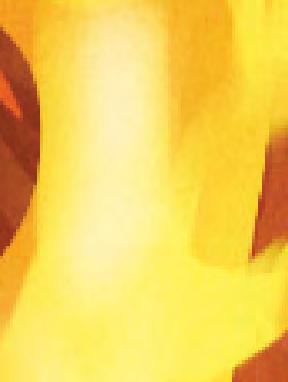
What the women in three Hindu epics taught me about womanhood
20 The Varsity Magazine Feature — Trials by fre
Writer: Ajeetha Vithiyananthan Illustrator: Jishna Sunkara
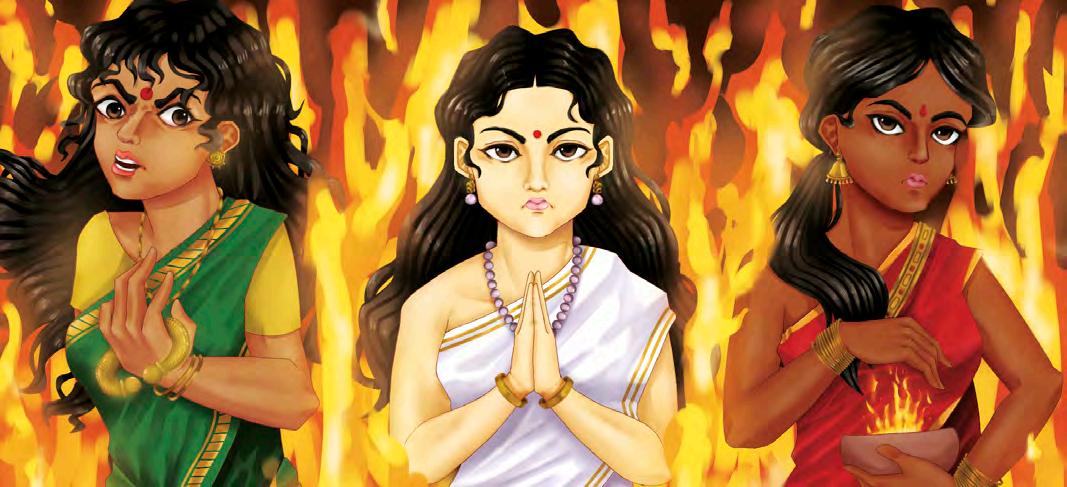
First, a disclaimer: the following isn’t meant to dissuade anyone from their faith, belief in a higher power, or optimistic nihilism. In fact, more power to you for walking through life’s trials by fire unscathed and stronger for it — I’m sure, one day, I’ll come out the other end too.
I have a fickle relationship with faith. My parents are Hindu by ancestry and choice, whereas I tend to identify as Hindu by ancestry, agnostic by choice, and a convert to any God who’ll take me by exam season.
I won’t go into extensive detail about why I walked of the path to salvation, ending reincarnation, or whatever else. Put simply, I’m a humanist at heart — I believe that I can satisfy my emotional and spiritual needs and follow an ethical life without God or religion — and am determined to stand by my own moral compass.
Nor will I go into how I walk the line between existentialism, nihilism, and absurdism — because I don’t. Every day, at random, I trip and fall — but never settle — into any one of the three philosophies about our life, death, purpose, or rather the lack thereof.
Instead, what I would like to divulge here is my love for the mythos and my unwavering love for my fellow women, mortal and immortal.
My love for Hindu stories was instilled by my parents, explored through Indian classical music, remembered during the excruciating wait for Uncle Rick’s The House of Hades, and like any Gen Z kid when the adults ran out of answers to our unending questions, reignited on the internet. I also grew up adoring the Hindu goddess Durga — a principal form
of Shakti, the divine female energy; the protective mother of the universe; and a badass warrior — and I wish to embody her energy, forever and always.
Aside from Durga, three other female figures also occupy my mind: Ramayana’s Sita, Mahabharata’s Draupadi, and Silappathikaram’s Kannagi. These women share three qualities besides being one of, if not the defining protagonists of diferent Hindu epics. One, they are strong women who endure tough ordeals and refuse to be beaten down. Two, they are women whose ‘purity’ is considered of the utmost importance — but, then again, what woman doesn’t have that in common? Three, oddly enough, they each share a story with Agni, the god of fire.
These women undergo unspeakable trials that involve large amounts of sufering, and their stories eerily echo how I think women are treated in society today.
Fire as creator, destroyer, messenger, and watcher
Fire is a ubiquitous part of anyone’s story — not just those of Sita, Draupadi, and Kannagi, whom we’ll get to soon.
Fire is a natural element of the Earth and one of humankind’s first discoveries. From time immemorial, we humans have been in awe of fire: it keeps the world bright, our food easy on the stomach, and us and our loved ones warm. Simultaneously, we’re terrified of it: painful to endure and sometimes deadly, fires can be weaponized against us, be it by mother nature or fellow humans.
Hence, it follows that Agni has a central role in Hinduism. Agni is ofen depicted in a
deep shade of red with two faces — suggesting both his destructive and generous qualities — riding on a ram and wielding the fiery Agneyastra. And while considered the creator of the fire within the sun and stars, and the heat required for digestion, his humble abode is within wood, among humanity. As fire can be reborn with the friction of two sticks and maintained as long as there’s a steady supply of oxygen, he remains forever young yet immortal.
He’s also the courier between the human and celestial realms. From temple altars to homely shrines, lamps are lit from dawn to dusk in service of the Gods, to whom our prayers and from whom our boons Agni carries. In yagnas and pujas — rituals of fire — his seven tongues are said to consume sacrificial oferings, and the smoke trails signify their path to the gods above. In Hinduism, when people die, their bodies are cremated so that — according to some tales, at least — Agni guides their souls to their rightful destination in the cosmic order.
But to me, his most interesting and markedly diferent role from other mythological guardians of fire is that of the witness. As fire burns in every corner of the world, so does Agni, ever-watching the triumphs and tribulations of humanity. Agni is considered the primary witness for Hindu marriages, as a couple completes their seven vows to each other and the corresponding seven circles around the sacred fire. Because Agni bears witness to all, he’s also considered the best at discerning truth from lies. As such, fire is not only a creator, destroyer, messenger, and watcher, but also a judge.
Winter 2024 21 Flame
Agnipariksha is the age-old practice of making someone walk through fire — or a proximate — with the idea that an unscathed success would indicate truthfulness and purity. It’s horrifying, and yet, the idea and execution of a ‘trial by fire’ isn’t unique to Hinduism, as the term originated from medieval practices. One of the most famous instances is that of Emma of Normandy in mid-eleventh century England, who twice widowed was accused of adultery with the Bishop of Winchester and required to walk across red-hot ploughshares to prove her innocence.
Furthermore, while something like ‘vibhuti,’ the sacred ash made of burnt dried wood or burnt cow dung, is applied across the forehead only among devotees of Lord Shiva
— the destroyer of worlds and companion of Shakti — burning incense is also a common practice in Buddhism, Islam, and Christianity. Given that fire can eliminate filth and kill bacteria, it’s fitting that fire is seen as the remover of sin and revealer of truth.
So, Agni is a creator, destroyer, messenger, watcher, adjudicator, and purifier — but what does he have to do with Sita, Draupadi, and Kannagi? These women’s stories take place across the Indian subcontinent and across diferent times, yet Agni plays a crucial role in each one of them.
Sita in Ramayana
If you’ve ever celebrated Diwali — the festival of lights — with some Hindu friends, you probably have heard of the Ramayana
good fortune, wealth, and beauty. She’s also considered the daughter of Mother Earth, as she was found as a baby in a furrow that Janaka — the king of Mithila — was plowing, who then adopted and raised her as a princess. She married Rama, the prince and soon king of Ayodhya and the incarnation of Lord Vishnu, the maintainer of the worlds — thus her divine companion.
Agni crucially appears in the Ramayana afer Sita’s rescue and the crew’s return to Ayodhya. When they return, Rama hears concerns among his citizens about Sita’s chastity, and Sita willingly performs an agnipariksha to prove herself to the kingdom.
The epic, known in Sanskrit as “Rama’s journey,” centres around Rama and Sita: their upbringing, marriage, her abduction by the King of Lanka Ravana, Rama and his crew’s defeat of Ravana, and their return to the Kosala Kingdom’s capital, Ayodhya, where they are coronated as king and queen. The lamps lit by Hindus on Diwali symbolize the triumph of good over evil.
In the Ramayana, Sita is the incarnation of Lakshmi — the Hindu goddess of


The details behind the agnipariksha vary by the epic’s retellings across the Indian subcontinent. In one version, it is said Sita is being asked to prove herself to her citizens — but not Rama, as he knows her loyalty is on a cosmic level — primarily so that her husband can rule as a righteous and respected king. In another version, Rama also doubts her chastity, and Sita enters the burning pyre of her own accord to prove her faithfulness.
In a later addition to the original, Ravana is said to have abducted Maya Sita, an illusionary duplicate, while Sita was in the refuge of Agni. Through the agnipariksha, the real Sita switches with Maya Sita and returns. In this version, Rama is in on the plan while the citizens rejoice their queen is pure.
In yet another version, however, despite Sita being untouched by the fire, people continue to doubt, so Sita leaves for the forest. She returns years later with her and Rama’s grown-up sons, only to be asked to prove her chastity once more. Knowing that she’s done enough, Sita asks Mother Earth to open up and take her back — and Earth complies, swallowing her up whole.
Draupadi in Mahabharata
You may have heard of the Mahabharata through Oppenheimer’s famous misquote (“Now, I am become Death, the destroyer of worlds”) from the Bhagavad Gita — a scripture from the epic detailing a lengthy conversation between Krishna, another of Vishnu’s incarnations, and Arjuna, one of the five Pandava brothers central to the epic.
The Mahabharata, the Sanskrit roughly translating to “the great epic of the Bharata dynasty,” centres around the Pandava brothers: their growing up; exile by their cousins, the Kauravas; and the war between the Pandavas and Kauravas.
There are many reasons this war broke out, but chief among them is Draupadi. When Drupada, king of Panchala, performs a yajna
Feature — Trials by fre 22 The Varsity Magazine
asking for a weapon to destroy the Bharata dynasty — the Pandavas and Kauravas — Draupadi is born as a fully-formed young woman from the sacrificial fire. Through a series of intentional and unintentional acts by the many characters in the epic, Draupadi marries all five Pandava brothers, further setting the stage for the oncoming war.
In all fairness, Draupadi herself didn’t intend to be a catalyst for the war. A pivotal moment in the war occurs when the eldest Pandava brother, Yudhishtir, bets his freedom in a slanted game of dice — and loses. When Saguni, the cunning maternal uncle of the Kauravas, reminds Yudhishtir that he still has Draupadi, Yudhishtir puts her at stake and loses her as well.
Draupadi is soon dragged by the hair into the court, and one of the Kauravas proposes that she is unchaste for being married to five men and orders that she be disrobed ‘like a prostitute.’ In the Mahabharata, this is considered incorrect because her role as a common wife is seen as a private afair; she was given a boon in a previous life to marry five Bharata princes, each begotten by a god; and more importantly, as she was born from fire and thereby a child of Agni, Draupadi is the epitome of purity. Narrative aside, there are other issues with this comparison: it should be obvious that sex workers should, regardless of what you think of their occupation, have basic respect and autonomy.
Thankfully, her disrobing is stopped by the powers above — but not quickly enough as her humiliation fuels her righteous anger that her husbands would have to act on. Each of the younger four brothers takes an oath of vengeance against the various people who took part in her humiliation, which they later fulfill during the war.
Kannagi in Silappathikaram
The Silappathikaram may not be a well-known Hindu epic, but it’s considered one of the five great epics of Tamil literature. Silappathikaram in Tamil roughly translates to “the story of the anklet.” The anklet in question belongs to Kannagi, who has a special place in my heart; my dad afectionately calls me his “Kannagi Amman,” as she’s considered my family’s kuladeivam — roughly meaning “family god,” similar to a guardian angel of sorts, in Tamil. My parents and their ancestors lived near and daily visited one of her temples in Sri Lanka, and so, though I am not religious, hearing the name fills me with pride and reverence for my roots.
The epic starts with Kannagi newly married to Kovalan, absolutely in love and bliss
in a flourishing seaport city in the Chola kingdom in what is now known as southern India. However, Kovalan meets and falls for a courtesan and dancer named Madhavi and moves in with her. Though Kannagi is heartbroken, she unwaveringly waits as a chaste woman for her unfaithful husband to return. Soon enough, a misunderstanding between Kovalan and Madhavi leads him to return to Kannagi, who takes him back despite the betrayal.
Afer having spent all his money on Madhavi, Kovalan is penniless — yet Kannagi encourages him to rebuild their life. They move to Madurai, the capital of the Pandya kingdom, where she gives him one of her jewelled anklets to sell. Then, in an unfortunate turn of events, Kovalan, framed by a merchant, is brought before the Pandya king whose queen’s anklets had been stolen and is immediately executed. Once she hears of this, Kannagi storms into the court and proves his innocence by breaking open her remaining jewelled anklet, revealing rubies instead of pearls. The king, mournful of his mistake, falls to the ground and dies suddenly, the queen soon following afer him.
Still, in a fit of rage and grief, Kannagi tears her breast of and flings it, cursing the city of Madurai. She demands Agni to burn the city, permitting only the good to escape: a large-scale trial by fire. And so Madurai is burnt to the ground.
truth, strength, justice, and purity — but for what? It is precisely their sufferings — the reasons for which I don’t know — that keep my mind preoccupied.
Of course, it is easy to dismiss their tragedies when one knows that parables are meant to convey a tale of good versus evil and that Hindu epics, in particular, are meant to demonstrate ‘dharma’ — one’s duty, or the right way of living — and ‘karma’ — the effects of one’s actions that determine their next life.
The point of this article isn’t to wedge feminism between people and their faith. I know that, in these tales, the characters are simply mirrors that writers, or the Gods, hold up to humanity, to show us the paths we could, and should, be taking and their consequences. After all, Sita is ultimately Goddess Lakshmi playing a role; Draupadi is never fully human, born already a grown
Placed on a pedestal, only to be burned down
By this point, you might be thinking: what the fuck?
These stories are tragic, the women undergoing severe hardship yet seemingly never achieving complete redemption. Sita, Draupadi, and Kannagi are epitomes of
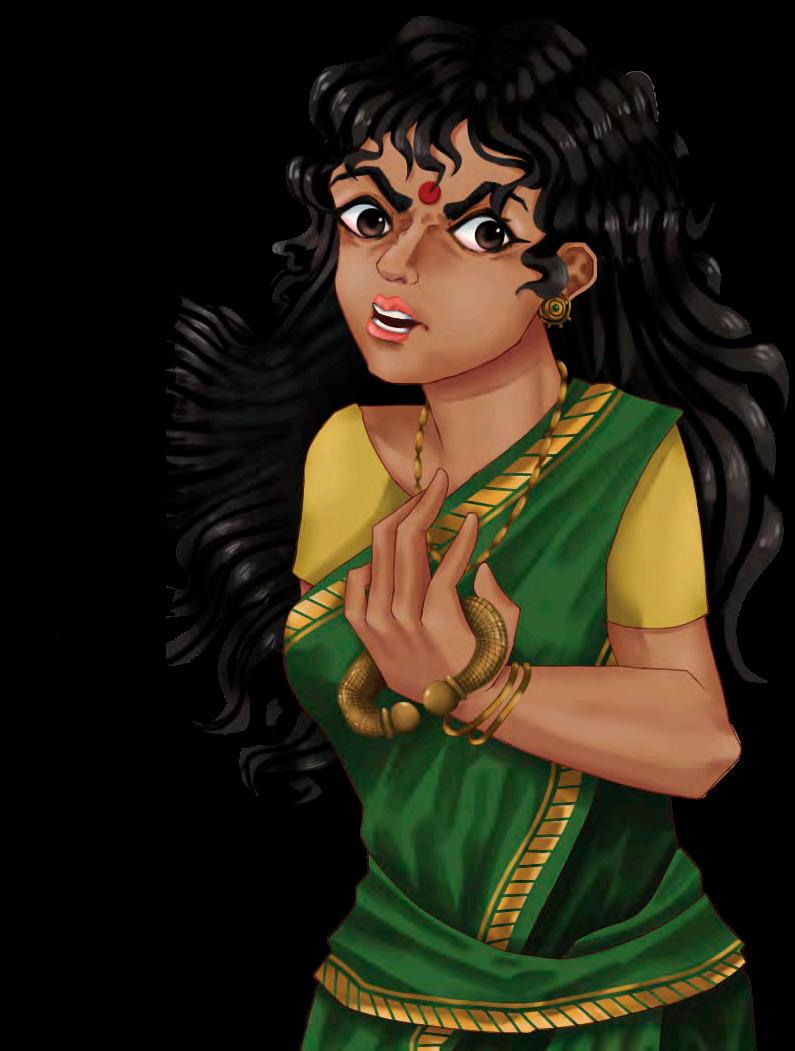

Flame Winter 2024 23
woman from fire as a weapon of destruction; and Kannagi becomes memorialized as Kannagi Amman, her chastity and valour worshipped by many, including my family. The three women are the perfect wives, and thus exemplary of the perfect woman.
Yet, the tragic heroine is a constant archetype in stories, past and present, which only begs the question: why are women in stories persistently made to suffer? In the Abrahamic religions, all evil stems from Eve’s eating of the forbidden fruit. No such similar story exists in Hinduism to my knowledge.
According to Aristotle, a tragic hero must have a hamartia — a fatal flaw or error, not necessarily a morally condemnable one — that leads to their ill fate. While I consider Sita, Draupadi, and Kannagi to be infallible, do they also have a hamartia? Is Sita’s fatal flaw her excessive trust, ‘allowing’ her to be kidnapped; Draupadi’s her sharp tongue, which angered the Kauravas and invoked their hatred; and Kannagi’s her forgiveness? Or, are they not even allowed to be less than perfect?
I should mention that none of this is to say that the men in these stories don’t suffer. The men — Rama and Ravana, the Pandavas and Kauravas, Kovalan and the Pandya king, and more — do suffer, but they more or less suffer directly or indirectly by their own and each other’s actions. How I see it, the women in these stories suffer at the hands of men — men they trust will give them at least basic respect and keep them safe — for no fault of their own.
Now, one might think there’s merit to these women’s trials; they’re at least not docile or passive, instead choosing to venture alone into the forest; single-handedly raise children; wage war; or burn an entire city to crisps in righteous indignation — but it is still unfair that they had to be so strong in the first place. Though Sita might’ve been the only one to go through a literal trial by fire, Draupadi and Kannagi, too, go through their own metaphorical ones.
When I think about it, nearly every single woman I’ve adored and cherished in my life — and this probably extends to every woman in the history of humanity — has been prodded, questioned, and tested, their value apparently never inherent to themselves but given, and just as easily taken away, by others. As women, we’re placed on the highest pedestals, seen as precious vessels of purity, until just one blemish taints our surface — after which we’re burned down to ashes and a new pedestal is built for the next unsuspecting woman. Sooner or later,
we’re not young enough, naive enough, loyal enough, patient enough, or strong enough — good enough — for the patriarchy.
And having grown up religious, I can’t help but ask: what mistakes are okay? What is my supposed dharma, and is it different from that of men? Why is a woman’s chastity so important? Is my existence as a woman, marked by suffering according to one too many writers, karma for lives I don’t remember? Or are these stories simply highlighting the unfairness women endure from the men around them? Are these stories actually feminist?
When my mother lights the lamps and prays every morning at home — the place where seemingly only women are relegated to do so while men predominantly run the temples — should I join her? When I do join her, I watch the flickering flame and am reminded of Agni: in my story, does he play witness, protector, or male saviour? Or does he even care?
Often, I fear I am fated to end up like Sita, Draupadi, or Kannagi — my morality and intelligence tried, my body and self capitalized on without my will, or slowly made mad until I explode, incinerating everything I touch.
Alternatively, attaining perfection — impossible for any human but somehow made even more so for every woman — may just lead
me to give up entirely. It’s a more liberating prospect but still shameful with my conditioning. I have to remind myself: while I aim to embody Durga, I’m only mortal and I can’t triumph over evil all the time, so I’ll make mistakes, and that’s okay.
Do I hope that Agni, in some form, helps me walk through my trials of fire? Yes: as I’ve said my faith, or lack thereof, is the opposite of resolute.
But more so, do I hope that I can tame the flames, stoked by the women who came before me, fictional or real, so I can direct them to the patriarchy and set it alight? Absolutely.



24 The Varsity Magazine Feature — Trials by fre

Winter 2024 25 Flame
Illustrator: Mariia Charuta





The politics of Female Rage
Criticizing the feminized romanticization of suffering
The glamorization of women’s experiences is now dominating social media discussions. ‘Female Rage’ is one of these topics, with this title ofen coming alongside a film edit of clips glorifying ‘real rage’ — rage like a teenager slaughtering all of her classmates in Carrie or the famous “cool girl” monologue in Gone Girl
As I reflect on these videos, I can’t help but wonder: has this glorification of rage actively changed social perceptions of women’s anger? Has it saved the next generation of girls from their anger being weaponized against them?
I was born a girl, but I only became aware of the significance of this fact when I discovered it was a bad thing. Girl is a title of limitations which dictates the things I should not do: “Girls don’t talk like that,” “Girls don’t sit like that.” Growing up as a girl is learning all the things that come along with a “don’t.”

Girls are told to not be angry, that their anger is unproductive and irrational. As a child, I felt that I was distancing myself from the ‘ideal girl’ with every exertion of anger. When they say, “Calm down” and “Don’t be bossy,” I hear, “You’re not perfect, be better.”
What is anger? On a scientific level, anger is a primitive human emotion rooted in our brain’s reward circuit that is produced when we perceive an outcome that fails to meet our expectations. At its core, anger is a passion, a reaction to a perceived injustice.
I have been taught that a woman’s anger is an overreaction, a symptom of her period, or hysteria. Yet research such as Rebecca Nowlis’ 2000 study on the comparison of anger expression between men and women, women experience anger as ofen as men; they just process the emotion diferently.
Men are generally more expressive and aggressive with their anger, while women are repressive and avoidant. A study by Arizona State University (ASU) found that men’s anger receives positive feedback, while women’s anger receives negative feedback. The study found that when men expressed their opinions with anger, participants rated them as more credible. When women expressed those same arguments with anger, however, they were perceived as overly emotional.
“This efect can’t be explained by women communicating anger less efectively or looking diferent when they express anger because we took all of that out of the equation,” psychologist Jessica Salerno, co-author of the study, explained in an interview with ASU News. “The efect was due to participants thinking that anger came from a man versus a woman.”
Why is it so much harder for a woman to be angry? In The Robber Bride, Margaret Atwood addresses the domination of male fantasies over the world. A woman is to always hold a self-awareness of her role as a woman, and her duty to appease. Women internalize this message and exercise every action under the condition of appeasing the imaginary male gaze. As Atwood writes: “You are a woman with a man inside watching a woman.”
How should a woman behave? We only have to look at the stories we tell to know. Paradise Lost by John Milton, one of the most influential retellings of the Biblical story about the fall of man, develops the feminine ideal through the first woman, Eve. Eve’s gentle, humble, and submissive demeanour is what Adam is attracted to, and she is perfect until she makes a mistake and eats the apple. She apologizes, but Adam’s anger shames her back into her meek behaviour. While he is allowed to get angry, she is not.
26 The Varsity Magazine
The politics of female rage
Writer: Carly Campbell
Visuals: Kaisa Kasekamp & Arthur Dennyson Hamdani
Female anger is a stain on the ideal feminine caricature. In turn, women are forced to accept anger as selfish, unattractive, and wrong because it’s not what men want. This restriction of anger maintains the patriarchy in ways we don’t immediately see. We reflect on our anger with shame, and we instantly think about how we can communicate more respectfully. We sofen the blow and accept the terms presented to us even when we want to scream.
This is how I understand the concept of Female Rage. Female Rage is just rage, but when in the feminine body, it is perceived as unacceptable. Female Rage is just a concept created by the patriarchy to justify oppression. It tells us we are diferent by feminizing our emotions.
Within this general atmosphere, we arrive at the stories that defy this conservative depiction of women. These are the films that embody the Female Rage trend. This trend praises morally grey female characters who fight back and get mad. The “cool girl” monologue in Gone Girl speaks of the frustration with the male gaze. “‘Cool girl’ never gets angry,” says Amy Dunne, the film’s female lead who fakes her death and frames her cheating husband for her murder. Amy has appeased her husband’s fantasy of who she is for far too long, and she lets him know she has had enough by seeking revenge.
In another movie called Jennifer’s Body, Megan Fox’s character seduces the men who have continually objectified her, luring them in to kill them. Her killing sprees follow a ritual sacrifice framed as a metaphor for sexual assault, and appeal to women as a reclamation of power.
The rage these films depict is shocking because it’s aggressive and vengeful. These women get mad in the same way that men do. Women find catharsis in finally seeing this. But what exactly does praising these depictions of female rage do?
These glamorized portrayals only commodify women’s anger under the illusion of empowerment. These depictions operate by the same narratives which oppress women. By distinguishing this rage as ‘female,’ we perpetuate the idea that anger is uncharacteristic of women, and by glamorizing this rage, we reinforce the limitations of female expression by making even the ugliest emotion beautiful. The Female Rage trope accepts anger so long as it’s in the body of attractive, predominantly white celebrities.
bell hooks talks about the obstacles she has faced due to the Female Rage stereotype, specifically as a Black woman. Her book Feminist Theory: From Margin to Center expands on her continual struggle against the “angry Black
woman trope” and how this reduction has been used to silence her and tell her to ‘calm down.’
In this way, for Black women, their rage is not only feminized, but also racialized — indicating, once again, that society portrays anger as a privilege. The Female Rage trope reinforces this racialized diference. The aestheticization of Female Rage in the media attributes certain characteristics to the woman who has the privilege of being angry. Among these characteristics is whiteness.
“Why are women angry?”
I think the question Female Rage should address is, why? Why are women angry?
Anger can be a rallying force, a voice calling for action. Anger is an emotion, not a product. If anger reacts to a perceived injustice, then what injustice is Female Rage reacting to? Women have the right to be angry, and, more importantly, they have a right for their anger to be listened to. Instead of commodifying Female Rage in the media, we should start acknowledging it in social and cultural spheres. We must recognize Female Rage for what it is in all its ugliness and tragedy: rage.










Flame Winter 2024 27
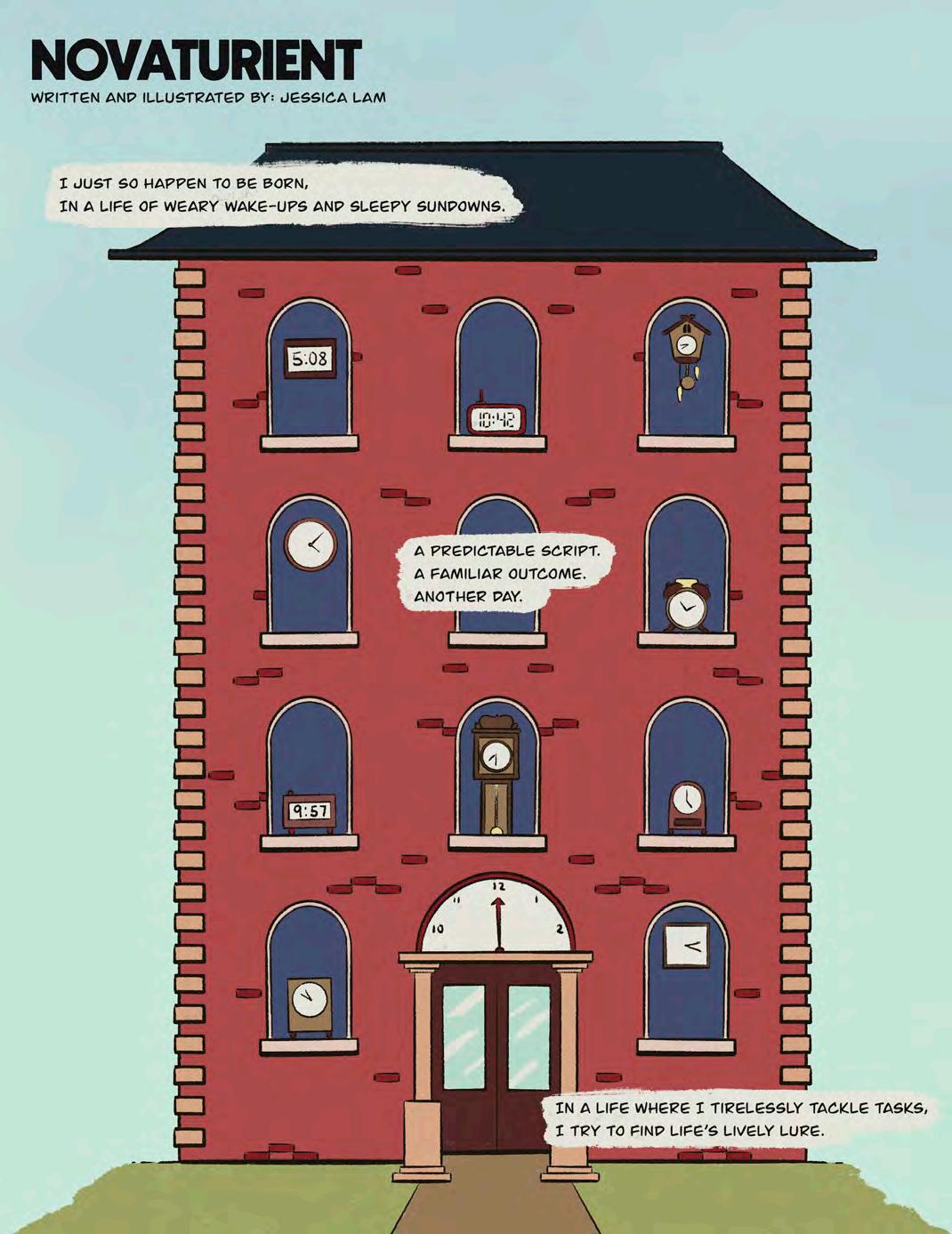
28 The Varsity Magazine Novaturient
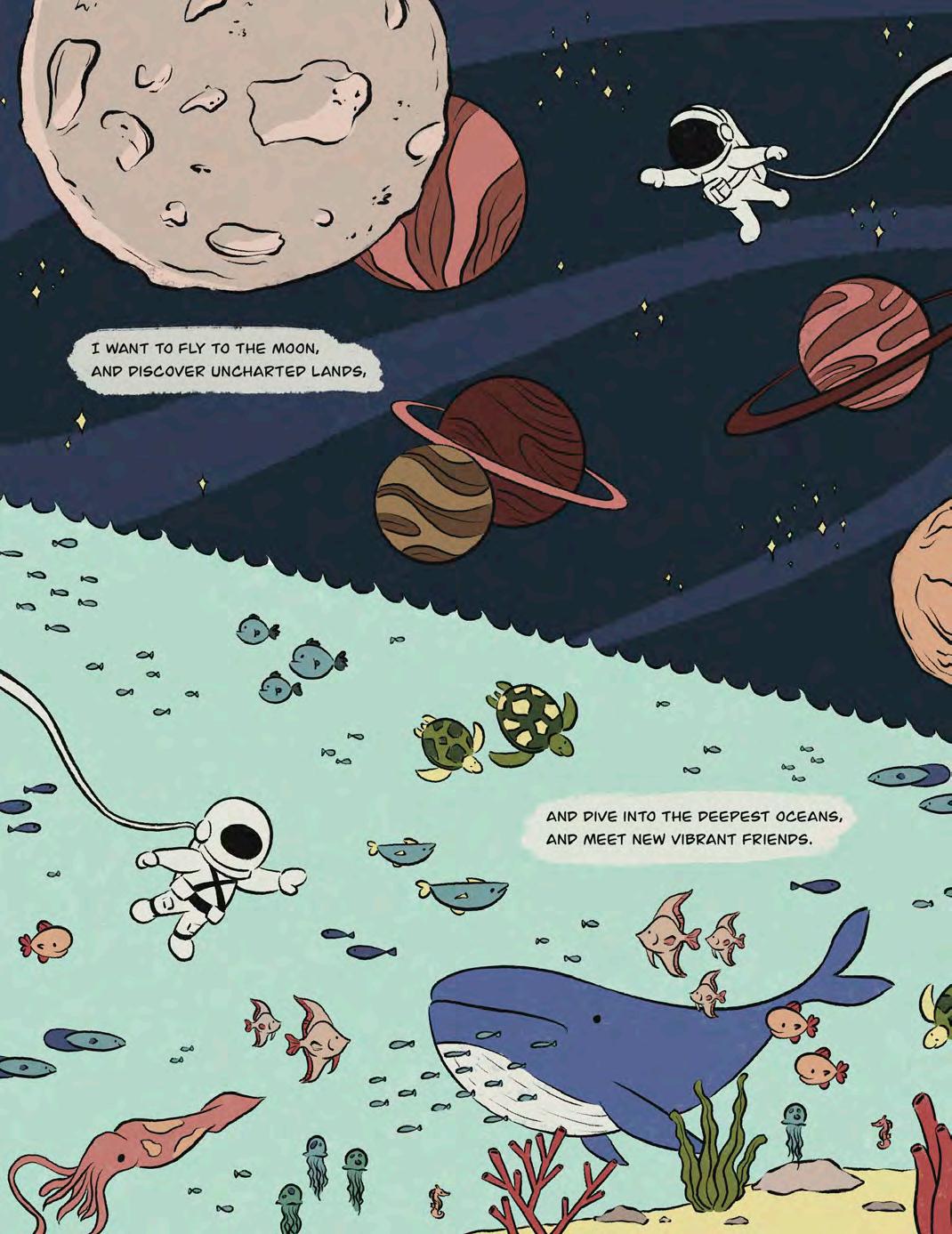
Winter 2024 29 Flame
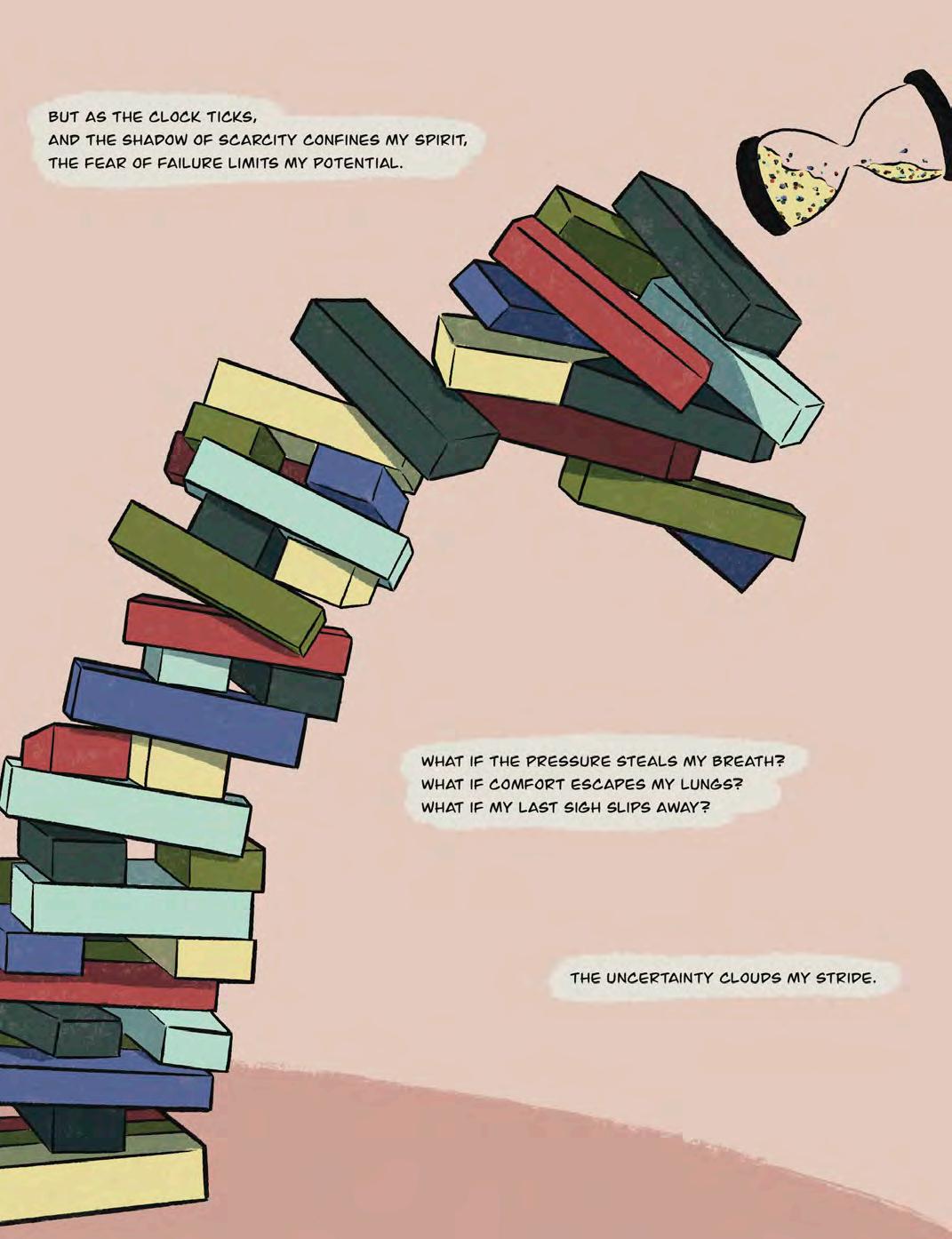
30 The Varsity Magazine Novaturient
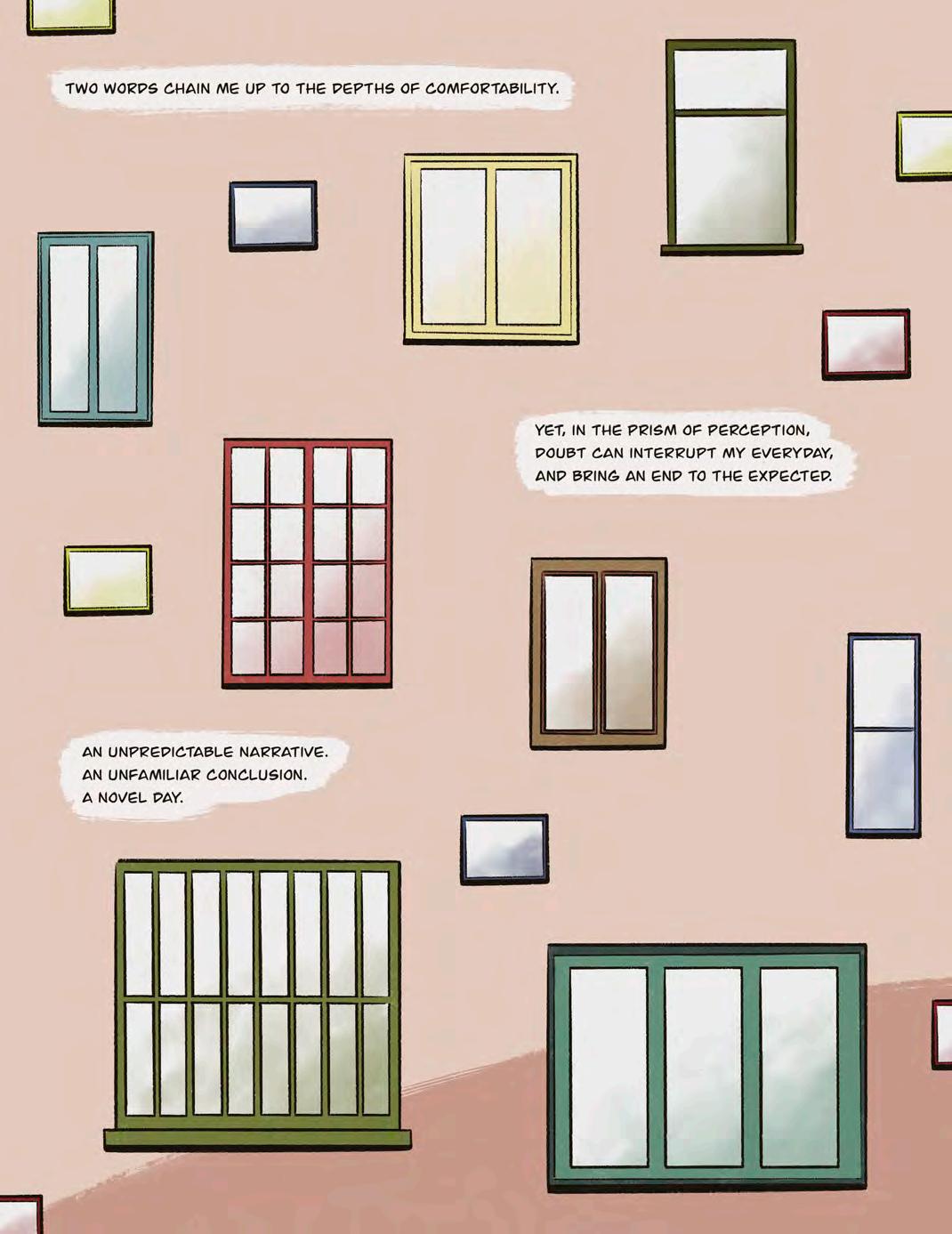
Winter 2024 31 Flame
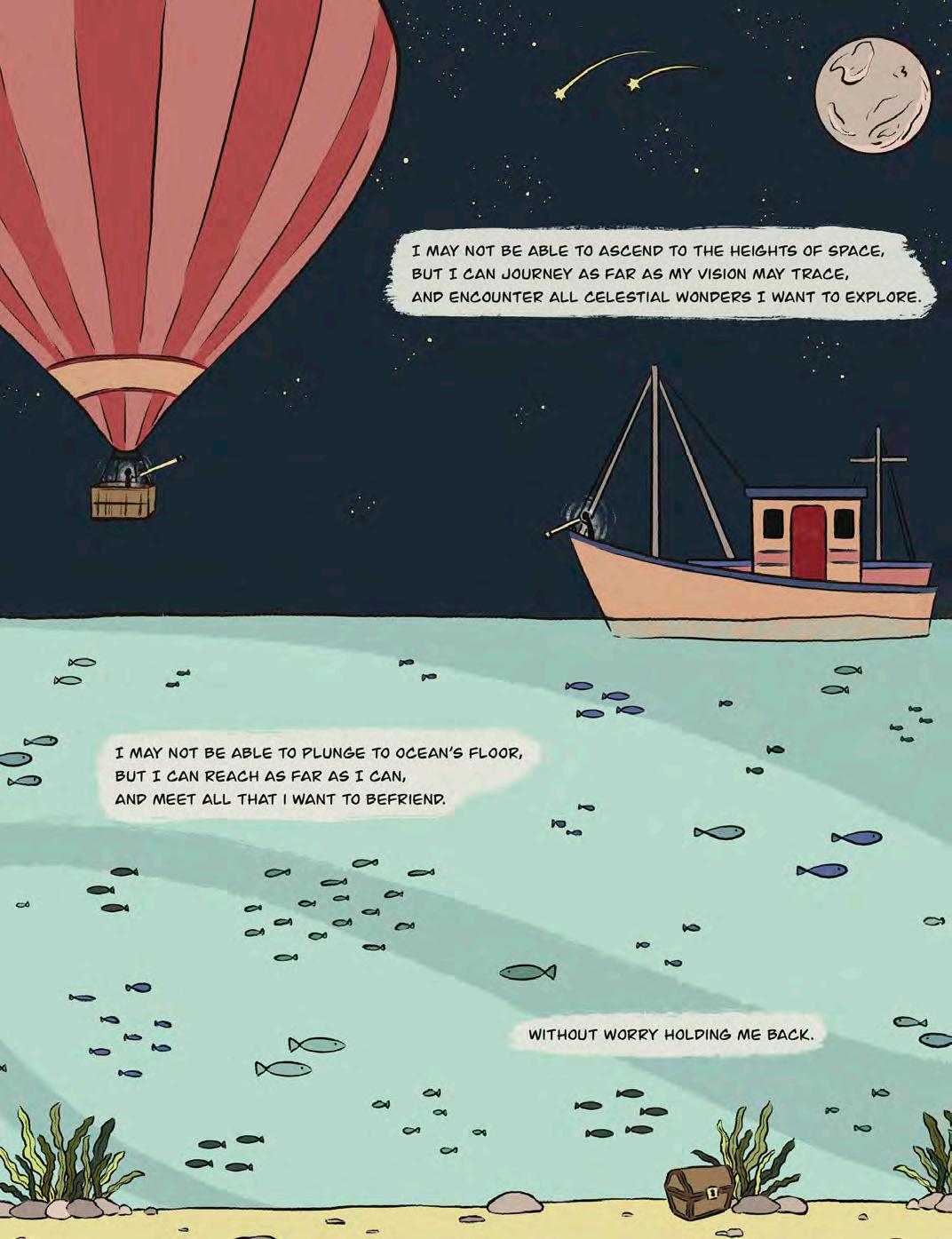
32 The Varsity Magazine Novaturient

Winter 2024 33 Flame

When love burns too bright
Exploring the line between healthy and unhealthy relationships


34 The Varsity Magazine
It always begins with a spark. A conversation that leaves you dreaming for hours, or a date that goes better than you expected. Slowly, the spark fans into a brightly burning flame. Eventually, love is kindled. The honeymoon phase brings the same comfort of sitting by a campfire, sharing stories, secrets, and parts of yourself that no one else knows. Most people go into a relationship with the idea of la vie en rose — seeing life through rose-coloured glasses and hoping for the best.
But what happens when the flame grows to become unbearably hot and scorches your skin? How do you determine the fine line between the blaze of a safe love and one that will burn you to the ground? While some crave such all-consuming intensity, how should we distinguish warmth from danger?
Today, although casual dating is normalized, many people still crave the bond of a committed relationship. Researchers, like Eugene Tartakovsky in his paper “The psychology of romantic relationships: motivations and mate preferences,” have suggested that people form romantic relationships for various reasons, including the desire to be loved and cared for, curiosity, and companionship.
Could it be this human longing for connection that can end up binding individuals to unhealthy relationships?
Is it the hope for a simmering safe flame that people hold on to? Unfortunately, the desire for love can keep people sustaining relationships that should have long ended.



Unhealthy relationships are cyclical, moving from bad times to fleeting moments of harmony that keep one or both parties on their toes for positive change on the horizon. Research suggests that some individuals stay in relationships for fear of distressing their partner by ending the relationship. This line of reasoning begs the question: when is it more important to put your well-being over that of someone you care for but causes you harm?
The perpetuation of intoxicating toxic love Entertainment media has sold the idea that worthwhile love is ofen painful and always passionate. While this can be true, the media overemphasizes the heightened emotions in love, almost favouring them to the calmer, more mundane moments.
In her song “The Way I Loved You,” Taylor Swif contrasts the high of being in an unstable relationship with the sweet simplicity of a serene love. About her current boyfriend, she sings: “He respects my space / And never makes me wait / And he calls exactly when he says he will.” Oppositely, about her ex: “I miss screaming and fighting and kissing in the rain / It’s 2:00 am and I’m cursing your name.”
Admittedly, this is a fun song to sing along to, but it is important to analyze its normalization of an “intoxicating, complicated” love. Swif portrays a healthy relationship as boring, in which she is “not feeling anything at all.” The depiction of stable relationships lacking feelings can be harmful as it perpetuates the myth that love must be
agonizing, ofen to the detriment of one’s well-being.
Similarly, the classic 1978 film Grease portrays the age-old “good girl” dating the “bad boy” trope. Throughout the movie, the male lead, Danny, pushes Sandy’s boundaries. Sandy’s adamance on maintaining her boundaries earns her the nickname Sandra Dee, an actress from the 1960s, whose beauty was characterized as innocent and pure. When Sandy defends herself against Danny’s persistent advances, this portrayal of her as innocent is deemed a tease based on this perceived innocence.
While Sandy and Danny might be acknowledged as not ideal models of a good relationship, this is an enduring trope in recent entertainment. For example, the plentitude of toxic and abusive relationships in the TV show Euphoria is romanticized and fixated on by the audience. One, if not the only, of the few stable relationships in the show, between the characters Kat and Ethan quickly ends because Kat deems the relationship unsatisfying. Additionally, her friend Maddy, who is recovering from an abusive relationship, comments on Kat’s relationship, saying she could never be in a relationship without “darkness.” Euphoria had the opportunity to portray a healthy relationship but instead chose to appease the audience’s interest in romanticizing toxic love.
Of course, the hopeless romantic in me wants to watch Grease and sing Swif without batting an eye. But I believe that the best kind of love is gentle, safe, and at the right temperature to keep you warm without burning. When consuming media that perpetuates negative stereotypes of relationships, we should make a distinction between fiction and reality.
Navigating the blurred lines
Rather than how ofen they avoid tension, a strong determinant of a healthy relationship is how the couple manages their conflict. Healthy relationships have periods of disruption, but what makes these periods bearable is that both partners are comfortable communicating their concerns, knowing their partner will listen and work toward a resolution.
Those who mismanage conflict may do so maladaptively due to the negative conflict styles they were exposed to in their childhood. Thankfully, these behaviours can be unlearned by treating your partner with respect and by receiving respect from them. Sometimes, it can be hard to see where your relationship is in the blurriness of the emotions, so seeking professional help can allow you to properly assess whether or not you are teetering of the line of stability.
In no way am I suggesting that individuals in abusive relationships should seek avenues of reconciliation. While it can be dificult to make the call to leave a destructive relationship, the loss of companionship can seem in the moment like a greater anguish than that of remaining in a bad relationship. Emotional attachment can indicate that you care about the future of your relationship, but such intense dependency can also be a symptom of toxicity. Ultimately, it is up to you to decide if you want to endure when you’re starting to feel like love burns too bright.
While the media depicts unstable love as true, fulfilling, and ultimately desirable, we must reconsider how such portrayals are fantastical and unreflective of reality. Life is painful, and finding the “darkness” of romance is mostly inevitable, but a relationship fuelled by uncontainable fire will always be destroyed.
To pursue a healthy relationship of mutual respect and compassion is to pursue a relationship that not only maintains the flame of passion and love but also invigorates individual growth. A healthy relationship does not destroy you; it helps you grow.

Winter 2024 35 Flame
Writer: Ewa Akomolafe
Illustrator: Biew Biew Sakulwannadee
Finding Running for (your) life: compassion, community and challenge,


36 The Varsity Magazine Feature — Running for (your) life
On the intellectual and


Winter 2024 37 Flame
Writer: Franchesca Fu
Visuals: Caroline Bellamy & Bianca Delmar
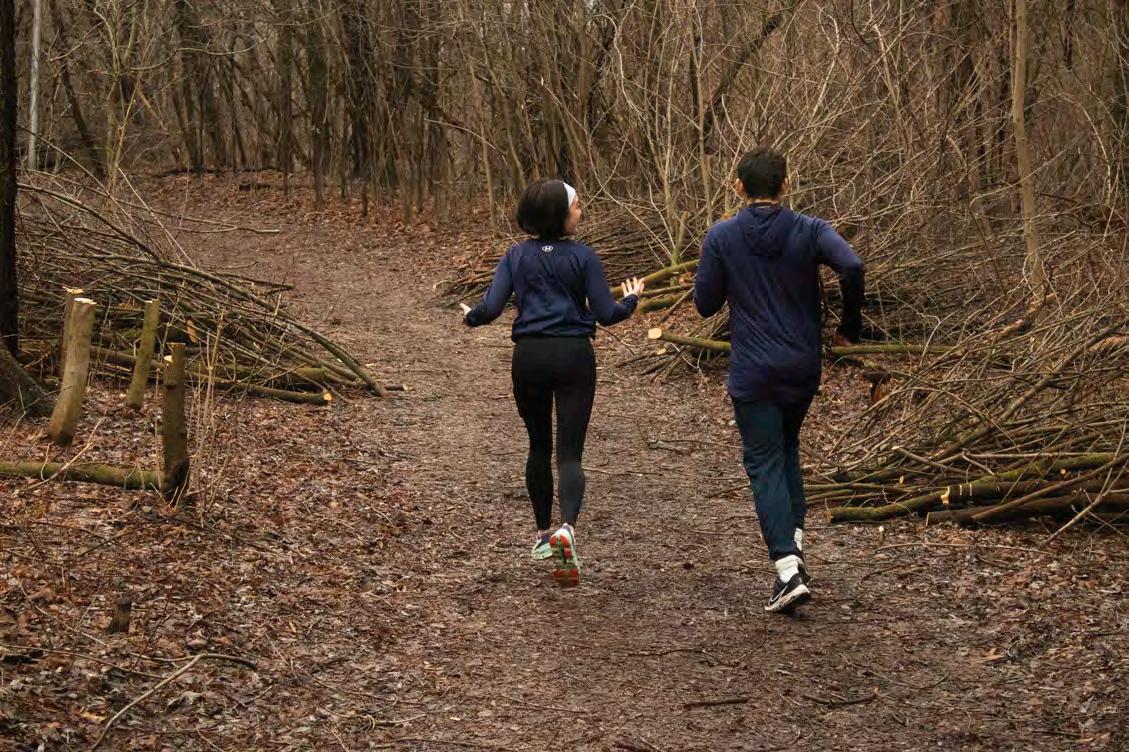
It’s one foot afer another, and the Toronto suburbs pass by me. There’s the brick house, the ultramodern house, and the worn-down house. I’m running, and I feel like I’m accelerating. With each step, I make sure to avoid the cracks in the pavement, and my foot only hits the ground briefly, never lingering. My hands are cold, but I feel warm. I’m paying attention to the pigeons, the thrif store about to close, and the plastic cup crushed on the sidewalk.
Afer I built up a baseline level of fitness, the groove of each training run has always been more or less the same. In the first few minutes, my body adjusts to this new, unfamiliar state of extra work and motion. Afer the first two kilometres or so, my body settles in. I hit a comfortable pace that’s sort of challenging, and I take it step by step.
I started running in June 2023 for typical reasons: it was a way to keep healthy, to feel the positive efects of endorphins, and to socialize with people. As I continued running, I progressed to 10- to 20-minute runs, and I realized that I was also running for the sense of freedom that came with covering more distance on foot, to see new neighbourhoods, and to feel the breeze on my face. Running, for me, is one avenue to set and reach self-directed
goals, to regularly demonstrate self-compassion, and to root myself in my community.
What running entails
Thomas Hurka, a U of T professor emeritus of philosophy, explains that running is primarily a physical and psychological challenge rather than a mental or intellectual one. Running mostly depends upon whether one’s body can meet the physical demands of reaching a certain speed, eficiency, or distance. To do so, especially during long-distance runs, Hurka explains that there’s a “serious pain barrier that you have to get through” to finish.
Generally, all sports and games balance a couple of diferent goals: there are mostly physical sports, like running, while others lie on the opposite end of the spectrum, like chess or bridge, which are “purely intellectual with a very little physical component.” Many sports combine intellectual and physical components For example, top hockey players need to be physically able to skate at a certain speed, while also being able to anticipate plays and make strategic decisions.
Even though running is primarily physical and psychological, diferent forms of running can be more or less intellectually engaging, involving a combination of strategy and
physical coordination. Trail running involves running on outdoor paths in nature, where runners must pay attention and adjust their stride to the uneven terrain as they adjust their pace accordingly. For ultramarathons, which are longer than the traditional 26-mile marathon, runners must strategize how to efectively conserve their energy, such as by walking for some sections or varying their pace to account for unexpected conditions.
Sports challenge competitors: From hurdles to goals
Beyond the health benefits or positive feelings that can come from playing sports, part of the value of sports is the challenge it provides. Hurka references a book called The Grasshopper: Games, Life and Utopia by Bernard Suits. The book argues that in sports and games played without any stakes, the end goal or outcome is “entirely trivial,” and the game’s interest is entirely in the challenge itself because without demanding strategy and intellect, competitive goals are “totally pointless.” Sports revolve around navigating set limitations that make one less eficient in reaching those goals. Regardless of its relative simplicity compared to other sports, longdistance running is no exception.
38 The Varsity Magazine Feature — Running for (your) life
The goal of some sports, Hurka narrates, is to “[try] to make the ball go into a hole in the ground… [try] to stand on top of a mountain… [try] to cross a line on a track before anybody else does.” However, Suits points out that rules prevent athletes from reaching those objectives in certain ways. In Hurka’s words: “In golf, you can’t pick the ball up, walk down the fairway, and drop it in the hole by hand… In mountain climbing, you can’t take a helicopter to the top of the mountain. And in a race, you can’t say, ‘I’m going to start five minutes before anybody else.’”
It’s not that we care about the ball being in the hole or at the end point of a race for its own sake. Those outcomes matter little outside of the sport. Learning how to overcome challenges as they arise, even more so than winning every race we enter or game we play, is invaluable and intrinsic to the athletic experience.
One athlete who demonstrates this ethos is Claire Heslop, an ultramarathoner, emergency medicine physician, and a U of T assistant professor of medicine. She has entered races worldwide, from the Canary Islands to Québec to Thailand, ofen covering distances exceeding 100 miles.
During medical school, she began running for health purposes and convenience, as it fit with her schedule to squeeze in exercise by running back home from a shif. Although she is now a seasoned runner, initially, she also had to overcome a steep learning curve to build up her endurance — she initially considered a five-kilometre run to be long.
To Heslop, sharing the experience of longdistance running can be a transformative experience. She captures the value of facing challenges to me: “Long-distance events are a way to move the needle magically on how much you imagine you’re capable of,” she said. “And I think that brings a lot to people’s lives… [to] cross the finish line of their longest race or pull themselves out of a bad race… or push through dificulty.”
Self-compassion and confidence
For Heslop, an important part of running is taking care of yourself and your body — accepting your realities while giving yourself the mental and physical tools to tackle obstacles. At first glance, long-distance running seems like an intense sacrifice to meet a potentially outrageous distance goal. When you train to run long distances, you risk losing muscle mass through muscle catabolism because you ofen push your body to its absolute limits. As runners, do we actually
emerge from each training session stronger and more capable than we were before? Does the pain we endure while we train have a net positive efect on our bodies and minds?
Ultimately, running fulfills Heslop emotionally and helps her feel stronger. She balances running with her other priorities, such as work and family. She acknowledges that everyone only has “one stress bucket” that can overflow. During particularly demanding weeks with multiple night shifs, she has to “dial [her training] down a little bit… and pay more attention to sleep.”
“Running makes me wonder if there is something more to life, a purpose to my life, and if I will touch it.”
Regularly running can encourage positive self-talk, which gets reinforced during each run. To push past discomfort during long runs or a lack of motivation, Heslop reframes the situation by telling herself, “I’m fine,” or by repeating small, afirming phrases, such as, “You get to do this.” Moreover, numerous studies on the subject have shown that talking to yourself in the second or third person can make you feel calmer and more confident, and more capable of performing tasks.
The self-compassion that runners practice also helps them distinguish what is within and beyond their control. Heslop explains that, during ultramarathons, her final time depends on many factors her training cannot prepare her for — the weather conditions, other competitors, and her level of fatigue
can all change between races. Particularly, as running distances increase, there is more room for uncertainty.
During a race in February 2023, in a crowded section at night, Heslop tripped over another runner’s poles and skinned both her knees, yet pushed onward. As the night progressed, she regrouped mentally by setting a more conservative time goal. To continue racing, she would have to be more cautious to avoid another fall, and she had to let go of her time goal.
Life can come at you fast, and race expectations can change instantly. Heslop mentioned the story of another Canadian ultramarathoner she’d raced with, who was hit by a deer that had been startled by the sheer amount of runners within the first five kilometres of a race.
Heslop embraces the fact that external factors can impact her performance on race day and uses that to focus on goals unrelated to her final time. “I have more capacity for joy in the race because I’m not about to jump on myself for doing something wrong. I’m not looking to criticize or be worried,” said Heslop.
That level-headedness and sense of practicality carry over into Heslop’s work as an emergency room doctor. There could be 30 patients waiting, and there could be 50 more patients even afer working as hard as possible for hours at a time. And the number of patients needing urgent care is entirely out of Heslop’s control and through no fault of her own. So, it does not help to push herself beyond a sustainable pace and she avoids blaming herself for circumstances that are beyond her control.
“The more dificulty life throws at you, [the more things will] be going outside your control… So, having a lot of compassion for ourselves really lifs the stress reaction,”

Winter 2024 39 Flame

said Heslop. That applies whether you’re completing a 10-kilometre run, confronting societal injustices, or coping with personal hardships.
To run long distances, you also need gusto. You need to let self-belief fuel action. Heslop describes self-belief as believing that one can surpass what they believe they are capable of and “finding out how to do that.” With appropriate training, she says, we can “find out what happens” and demonstrate one’s potential. Afer all, self-belief is free — and, she points out: “if you’re wrong, it’s not the end of the world.”
Community connections: The U of T Running Club
Each person’s running journey is personal — your mile time is yours alone, and you cross the finish line without anyone else’s help. But that does not mean that running is a solo sport. Here at the university, the U of T Run Club organizes two weekly five-kilometre runs on Monday and Wednesday that start at the front steps of University College.
Outside of their weekly runs, they also host 10-kilometre weekend runs and fun-themed runs. Past events have included cofee, trash cleanup runs, and fundraising — for example, a fundraiser for The Hospital for Sick Children (SickKids). Participants donned special bibs and received a sticker for each lap completed around Queen’s Park. Around 40 participants ran over 600 laps that day, indicating the community’s interest and active engagement in these positive activities.
Emily Nguyen, co-president of the U of T Run Club and medical student, recalls an instance with the run club that helped her run consistently. During her first run with the U of T Run Club, another participant intentionally stayed back to walk with her when she struggled to complete the run. Had the other runner not demonstrated such kindness, Nguyen might have felt too “nervous or embarrassed to even come back,” she said, because of how she had lagged behind. Receiving assurance from another runner helped her feel more confident in her eforts and encouraged her to come back.
That non-judgmental and welcoming attitude is one of the core tenets of the run club. The club’s motto is “No one lef behind,” and the club leaders uphold this with each run. Given that their events sometimes have over 100 participants, they are conscious that many members are beginners and may need more support to complete runs.
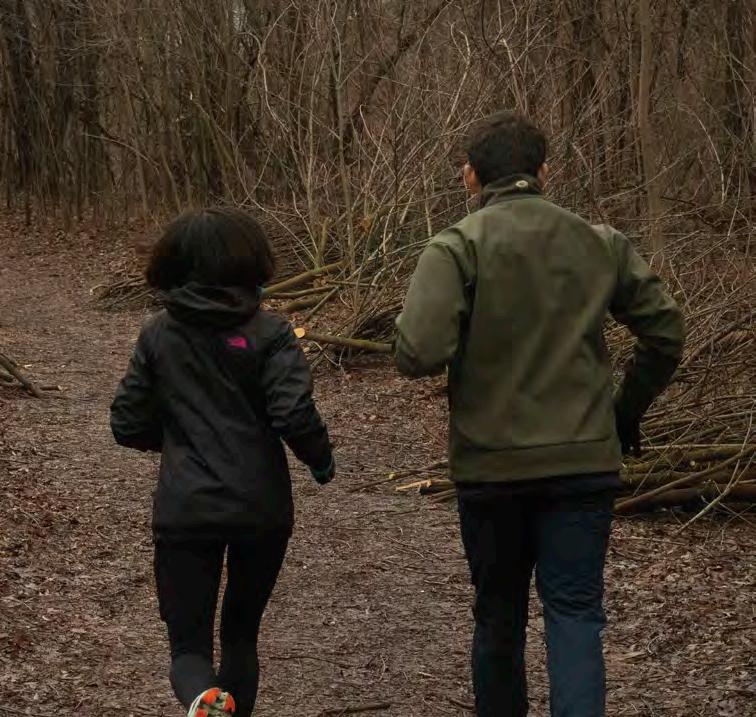
40 The Varsity Magazine Feature — Running for (your) life
By hosting runs consistently and creating an inclusive space, the club fosters many friendships and sparks connections, especially among first-year students. Ashim Bhattacharya, co-president of the U of T Run Club and pharmacology masters student, explained that “running is probably — I would say — the best way to meet people… there’s no other activity where you can so freely talk and [have a conversation with another person] while simultaneously participating in the activity.”
As a leader, Bhattacharya highlights that sparking connections and building relationships have been some of the most meaningful aspects of organizing the run club. Nguyen sums up her experience of the run club in two words: community and challenge.
Not only does running with a social club forge valuable introductions and bonds, but it also provides emotional support as
people strive toward a common goal. Having led hundreds of runs in the past few years, Nguyen said, “We’ve had some people join Run Club to lose weight, and to see them, you know, achieve that goal [is rewarding]. We’ve had some people join Run Club to become fitter. You know, they can barely run [five-kilometres] the first time, and now they’re running half marathons.” People build a sense of camaraderie through the joys and challenges of running regularly with people with similar ambitions.
Running with other people who show up for similar purposes can help people feel more rooted in their community. Runners see familiar faces and spark meaningful conversations with each other. Through that simple process, runners gradually feel more integrated into a community or place and learn to feel that their presence matters to those around them, regardless of how well they know them.

Keeping on Heslop’s words still ring true: we can only control what we can physically control, and despite our eforts, the outcomes of our goals ofen depend on factors beyond ourselves. It’s a bit of a truism, but hearing it from an elite runner reframes for me what it means to set an ambitious goal and show resilience. That perspective has worked for her. Maybe we, too, can learn to embrace that belief and redirect our energy to take pride in our small accomplishments in pursuit of big goals.
More importantly, I can put that sentiment into practice every time I lace my shoes to run. I can see how running can give me a sense of agency and shape my perspective. When I am having a bad day, feeling worried, sad, lonely, or whatever else in between, if there’s one thing I can do, it’s run. When I run in the cold and rain, I feel as if I can defy the weather by resisting the common temptation to stay inside at home.
When I’m on a long run outside, my breathing becomes laboured, yet I am focused enough to reflect on my day and take in the scenery around me. I see the patterns in the sky. The clouds look wispy and sof, and I see patches of blue in the distance. In the larger scheme of things, I feel small and insignificant. Running makes me wonder if there is something more to life, a purpose to my life, and if I will touch it. But those are questions I will never receive
“Learning how to overcome challenges as they arise, even more so than winning every race we enter or game we play, is invaluable and intrinsic to the athletic experience.”
definitive answers to. As I run harder, those questions fade away. I am relieved. Every run simplifies the noise in life a little bit.
Maybe I would even keep running if there were no physiological benefits, if there was no scenic view, or if there was no upcoming race. Maybe I would keep running just to take step afer step, step afer step. Maybe I would run for the sake of running alone.

Winter 2024 41 Flame
Writer: Clarissa Hapin Illustrator: Zoe Peddle Stevenson
From the initial spark ignited by the earliest humans to modern civilization, fire has been a fundamental force in the essence of human existence. Its ability to inflict damage while also shaping communities, cultures, and religions allows it to symbolize something greater than itself; fire represents both the destructive powers of nature and its ability for renewal.
Amidst the extreme pressure and heat, civilizations have emerged and collapsed, forests have been burned down and regrown, and human beings have undergone profound loss and change. Fire is not simply a binary phenomenon solely defined as destructive — it is a multifaceted element that embodies the basic principle of irreversible change. Through the lens of chemical reactions, we can understand the concept of fire as irreversible, highlighting its ability to simultaneously consume and regenerate,
ultimately representing the perpetual cycle of creation and destruction inherent in the very core of existence.
The formidable force of fire echoes across nature, causing widespread destruction in its path. Natural disasters such as wildfires, volcanic eruptions, and forest fires starkly depict the magnitude of how quickly fire may consume extensive areas of land, destroying everything. Wildfires, ofen ignited by lightning or human activity, spread rapidly to devour everything in their trajectory. They not only destroy the land but also threaten those living in those lands.
The Australian 2019–2020 bushfires burnt 19 million acres of land, of which 12.6 million hectares were forests and woodlands. Nearly three billion animals were lef struggling to find a new place to call home afer the fires. This event and others like it emphasize the enormous impact of fire on all life, showcasing its capacity to cause extensive casualties.
The destructive capabilities of fire are rooted in fundamental scientific concepts. For a fire to take place, three factors need to be present: oxygen, heat, and fuel. The reaction between these factors is called a combustion reaction. The transfer of heat is critical in how fire spreads, as increasing temperatures can cause nearby items to catch fire as well, thereby creating a chain reaction and continuing the process of destruction. To safeguard lives, livelihoods, and ecosystems from the destructive power of fire, people must understand and address the intricate relationship between natural forces and human activities that contribute to its degradation.
The profound impact caused by fire extends far beyond its capacity for destruction, permeating various aspects of human existence and civilization. Throughout history, fire has significantly impacted cultures, influencing them in practical and symbolic
42 The Varsity Magazine From ashes to renewal

ways. In many cultures, fire is regarded as sacred, representing purity, enlightenment, and rejuvenation.
The significance of fire is evident in daily life. We use it in cooking, allowing humans to convert raw ingredients into dishes shared amongst friends and family. In addition to providing nourishment, fire is crucial in providing heat, keeping those living in the cold warm, and encouraging shared connections through communal gathering spaces. The bonfire, for example, is a kind of “third space” where people gather together and share stories.
Fire remains a captivating force that sparks creativity and provides light in the darkness. In 2022, a study by Andy Needham and colleagues from the University of York claimed that ancient humans may have used firelight to create animations in caves as entertainment, igniting a spark of creativity for the artists of the past. Fire embodies a powerful representation of endurance, adaptation, and the everlasting cycle of destruction and regeneration. As humanity navigates through the intricacies of the contemporary world, the profound influence of fire serves as a sobering reminder of our interdependence with nature and the lasting impact of human actions on the environment.
The notion of irreversibility in science is firmly grounded in the principles of
thermodynamics. In thermodynamics, irreversibility is when an environment cannot be restored to its original state, also referred to as the natural process. It remarkably resembles the human experience, specifically in the transformational and destructive elements linked to fire. Similar to how chemical reactions progress toward states of equilibrium, human lives frequently undergo irreversible transformations triggered by moments of turmoil and catastrophe. The afermath of devastation presents opportunities for rejuvenation and growth, depicting the connection between scientific concepts and the human experience.
Fire can be viewed as the sublime: even though there is an inherent fear of fire and its destructive capabilities, there is also a deep-rooted admiration for its magnificence, prompting reflection on the delicate nature and endurance of life. The combination of both dread and attraction underlines the paradoxical characteristics of fire, serving as a precursor of devastation and a catalyst for change.
It may seem counterintuitive to appreciate destruction, considering the sorrow and heartache it brings along. However, the inevitable transformation lies within the realm of destruction. Similar to how fire engulfs and changes, destruction also clears the path for development. Losing something
presents an opportunity for adaptation, rejuvenation, and progress. The allure of loss does not lie solely in the absence but in fresh starts and unexpected opportunities that arise from ruin.
Fire acts as a catalyst for adaptation and resilience; it tests individuals on various levels, including their physical, mental, and psychological well-being. When faced with challenges, people are forced to confront their fears and reach into untapped reserves of strength and resilience that were previously unknown to them. In this case, survival is not simply about physical strength; it encompasses the insurmountable human spirit and the unwavering search for optimism despite overwhelming hopelessness.
To survive means to balance the tumultuous and unpredictable forces of change with courage, determination, and conviction in the innate ability to repair and evolve. Amid the devastation, one can uncover the true extent of their fortitude, the capacity to bounce back, and the lasting magnificence of humanity’s ability to rise from adversity, changed but unyielding. People must accept that destruction is not the only outcome of fire and see it as a driving force to pursue a more promising future.
Therefore, if you want to change something, burn it down.

Winter 2024 43 Flame
 Writer: Saf Shams
Writer: Saf Shams
Illustrator: Nabila Irreza
Stories make the foundation of our society. In and through stories, our ideals, truths, and philosophies take shape. They reflect us as much as we reflect them, providing a narrative for the continuing and changing beliefs of our wondrously everso-fickle species.
A trickster deity, Prometheus, features in several Greek myths related to the creation and development of humankind. In his most famous iteration, he stole Fire from the Greek pantheon and brought it down as a gif to humanity. Upon its reception, humankind was transformed.
To the ancient Greeks, including the playwright Aeschylus, the blessing of Fire symbolized an epoch of human supremacy over the earth. No longer would humans be animals of the wild but beings of technology, ingenuity, and advancement. In his tragedy, Prometheus Bound, Aeschylus reinforces the idea of Fire as “a teacher of all arts” and man’s “chief resource” by which humanity gained civilization.
For his crime, Prometheus was severely punished. Chained atop a high mount, birds of prey would tear away into his liver — only for them to regrow the day afer and the process to repeat itself. A brutal punishment for an act of such selfless empathy. Forevermore, Prometheus was enshrined as a rebel figure — a tragic hero. The tale was one that celebrated humanity’s claim to civilization and mourned the sacrifice of our kindly giver.
A gif or a curse?
The myth of Prometheus is an old one but has inspired us even in the modern day.
Mary Shelley’s seminal work is known as Frankenstein; or, the Modern Prometheus, wherein Victor Frankenstein is the novel’s twisted “Prometheus,” who gives life to his monster. The novel complicates the
The hope of Prometheus
Revisiting stories to reshape our future
relationship between nature and technology and reflects the broader commentary of the Romantic movement towards the ceaseless drive of the Industrial Revolution. It echoes the tragic tone of Prometheus’ own tale, exemplified in the monster’s accusation to Victor that “I ought to be thy Adam, but I am rather the fallen angel.”
In the twentieth century, following his involvement in the Manhattan Project, J. Robert Oppenheimer’s biography was penned under the name American Prometheus, drawing a parallel between the Grecian figure and the physicist, which recently inspired Christopher Nolan’s Golden Globe-winning masterpiece, Oppenheimer (2023).
Whether he must be a force for creative daring, of invention — indeed, of life itself — or a tragic figure made martyr for his eforts to light the initial spark of humanity’s potential, the attributes of the story and its central character have been quite established.
But was the gif of Fire worth giving?
Ever since the Industrial Revolution, the human drive for mass production and consumption has been unbound, accelerating evermore so following the escalation of globalization in the wake of World War II. Scientists have argued for the designation of a new geological age, the Anthropocene, as the product of those events. Furthermore, according to the American Association for the Advancement of Science, 97 per cent of experts in the field agree that the earth is currently undergoing human-made climate change. By the next decade, we will have crossed a crucial danger point of global temperatures.
Having received the gif of Fire, we have undoubtedly abused it.
A process of reimagining
Myths that span back thousands of years can be reinterpreted in a new light to negotiate
and even change those foundations. French Algerian philosopher Albert Camus is a telling case. In 1942, he published The Myth of Sisyphus. Featuring another ancient Greek myth, it recasts the trickster figure of Sisyphus from a criminal to a symbol of the philosophical school of absurdism.
It is this idea of collectively re-imagining stories that the writer Amitav Ghosh believes crucial for those who pursue artistic traditions and a responsibility we have towards giving voices, and stories, to the nonhuman: the natural world around us.
Andrea Most, a professor of environmental studies at U of T, teaches a course titled ENG377 — The Environmental Imagination. She describes one of the key goals of the course as an attempt to “re-imagine the old stories in ways that can help us meet the challenges of today.”
Similarly, the myth of Prometheus can be re-imagined as well and give life to Nature. Despite his rebellion, Prometheus was still a deity. To the Greeks, the gods and other such beings were not simply idols to be worshipped but the very manifestations of the natural order and the environment. By extension, Prometheus and the other gods are simply a personification of it, of Nature itself. Such a seemingly minor understanding changes our interpretation of the myth entirely.
Why would Prometheus — Nature — give us civilization? And why would it be punished for and by itself?
Prometheus’ act of giving Fire to humanity remains the same: by Nature’s allowance and cultivation of humanity, we were able to develop and achieve the technological and civil prowess we have. Through the gif from Nature, we achieved civilization and assumed the role of the species that has made the most impact on the planet in which we live, for better or worse. In doing so, we established
44 The Varsity Magazine
The hope of Prometheus

superiority over the earth itself.
Since the start of the Anthropocene, humankind has introduced the commodification and mass uprooting of natural resources in earth, sea and air. Certainly, Prometheus is bound, and every day he must sufer for his crime.
It is a bleak outlook — and an increasingly hopeless one. There seems little worth, if any at all, to Prometheus’ gif of Fire.
Prometheus, rescued Prometheus must be rescued, for we owe him a debt of existence. Coincidentally, the hope we need lies in his name itself, which signifies “forethought.” And the natural manifestation of Forethought stealing Fire for humanity seems especially poignant. We must imagine Prometheus aware of his fate — the punishment
he must sufer. We must imagine the pain that Nature’s act of cultivation will result in — and yet we are here.
As Camus would have us imagine Sisyphus happy in his absurd ordeal, we must imagine Prometheus hopeful. Hopeful that despite it all — despite the atrocities sufered as a result of Prometheus’, or Nature’s, actions — we will prevail. That giving humanity Fire was worth all of it.
It is a hope that can manifest through the very elements embodied by Prometheus. With the same kindness, empathy, and care that drove him to give us Fire, we must rescue him — treat Nature with those very qualities, cultivating it and letting it regrow. As his gif was to all humanity, so must we do our duty to Nature collectively: a single humanity,
joined as a unit, to save our great giver. Only in saving Prometheus can we justify his act and vindicate his hope.
Otherwise, the Fire’s curse will not be Nature’s to bear alone but incinerate us in the process. Prometheus will live on — hopeless and forever tortured, as befitting a deity of a force beyond us — a force we have belied ourselves into thinking we can control.
Prometheus has given us Fire. And Prometheus remains hopeful. The responsibility now falls upon humanity to rescue him, to save this Nature which has given us so much. It is a responsibility to which our species is bound to carry out — for both Prometheus, as well as our own sakes — and we cannot, must not, fail that hope.

Winter 2024 45 Flame

An entry about adulthood
46 The Varsity Magazine 20s bucket list
My 20s bucket list: Rediscovering awe in the simple
Writer: Julie Lam
Photographer: Brennan Karunaratne
If you had asked me my definition of fun years ago as an adolescent living at home, I would have equated it with spontaneity — a break from schedule for something unexpected that gave me the taste of freedom and the same unadulterated excitement, the kind of pure joy you experience as a child.
I remember the first time I snuck out. I waited for the house to fall silent in sleep, delicately slid the back door open with my heart pounding in my ears, and ran over to the front where I could hear my friends’ laughter filling up the quiet night. We ended up just walking around.
For me, growing pains were accompanied by a type of consciousness that I soon came to realize was an existential crisis on mortality; and even worse, I realized that it would probably never really go away. I became more aware of how people perceived me and if I was saying or doing the wrong things because sometimes it would feel like the world would burn down if I failed to stay consistent with my principles.
When I moved out, I realized how quickly things can change; I technically had complete freedom to do whatever, whenever. Afer growing up in a sheltered environment, this shif released my previously anchored life. I remember one of the first nights I was out walking home late at night, comparing it to sneaking out when I was younger, and realizing that this would no longer be an act of rebellion but just a walk home. It shifed my perspective.
Spontaneity became my new regular, and “fun” evolved into something bigger, something tangible. I felt myself becoming more hedonistic and yearning for more. But there were also many things I was unprepared for. The responsibilities were piling up; the future that I always yearned for was now my present; and I wasn’t sure if I was going to become successful the way I had been confident my faraway version of myself would be.
I began to look at things with a lens of urgency. Going to classes became equated to finishing undergrad in four years, and lighthearted trip planning meant completing a bucket list for my 20s. Where my actions once felt isolated from their consequences, everything I did now had the weight of
expectations; and with it, a feeling of inadequacy if I didn’t fulfill them.
I wanted to do more: write, create, go out more, work more, be more thoughtful. I never considered myself to be much of a perfectionist at all; I’m not someone who always dots my i’s and crosses my t’s. However, I found myself to be a walking contradiction because I also had an unrealistic expectation of what I could develop myself into in a singular year.
“The responsibilities were piling up; the future that I always yearned for was now my present; and I wasn’t sure if I was going to become successful the way I had been confident my faraway version of myself would be.”
This grasp on an immediate future — really an oxymoron — was detrimental. Early adulthood is a period where you learn that patience is a virtue; it’s a time when people are still searching for themselves, careers are only starting, and skill at managing finances is crucial. This was something I could comprehend in theory but found mentally dificult to practice. Being burnt out from life in general, I turned to other mechanisms to cope.
Instant gratification became the norm; with no one to hold me accountable to be patient for anything, I needed immediacy to check certain boxes and complete things to feel some reward. Consumerism, for one, had me in a clutch to impulse buy unnecessarily; scrolling endlessly on my phone entranced me to whatever unimportant five-second video was playing. It was just a way for me to procrastinate, and any current task, no matter
how minor, became something indicative of my self-worth.
I think a real turning point for me was when my mom told me that life shouldn’t be this complicated, and to remember the simple things.
Of all the things she has told me, this advice stuck in my head for days afer that, calling on me to be answered. The existential ache that has always meddled in the back of my head stood before me, staring me in my eyes, daring me to be confronted. I wanted to reject the sentiment that I became overzealous because it felt like I would be assuming a negative role, as if I was morally in the wrong.
But I also acknowledged that, to an extent, that existential ache was me. As an adult, the stakes do become higher, and the responsibilities pile up, but it also becomes a little too easy to fly too close to the sun, to lose sight of what was on the ground and the little joys in my life. Things I wished for when I blew out birthday candles became my reality, yet I couldn’t appreciate them because I got caught up in the confusing haze of early adulthood while looking into the future at a fault.
As simple as it sounds, staying present allows me to enjoy these smaller joys and, in return, experience wonder again. I concede that while it’s easier said than done, it feels like the only way to reclaim the same simplicity from before, in my childhood, and stay connected to today. There is something so intrinsically fulfilling about allowing yourself to play and feel awe, in the way that you can laugh without thinking about what you sound like and have an outing without replaying the conversations the next day.
I walked home the other day and took in my surroundings: the sounds, the people, the signs, the footprints lef in the snow. Maybe we rediscover some things we knew all along as a child.


Winter 2024 47 Flame
Time to start again, perhaps
A guide to enjoying singledom
Writer: Lauren Sarney
Visuals: Kaisa Kasekamp
It is around November every year when the approaching winter’s chill has crept into
the TV to watch my favourite holiday atrocity: Bridget Jones’s Diary


Time to start again, perhaps

Third-year English and history student Safwaan Shams understands the appeal of ing season. “I think that it’s intrinsically human to want someone in response to the environment around you changing,” he said. In response to whether he believes
“I became gratingly, grippingly, scream-intothe-void concerned that it might be that Bridget’s desperation to be loved had bled too much into my reality.”
ing season is real, Shams confirmed that he has observed that, during those colder months, more people join dating apps. “I
guess it is, at least from what I’ve noticed on the apps.”
Apps, pressure, and going it solo
My next issue to contend with was feeling entirely alone in my singledom while everyone else basked in the glow of romance.
To my surprise, the number of couples my age was curiously few. According to Global SVP of Insights Julie Arbit at Vice Media Group, only “one in 10 members of Gen Z say they are ‘committed to being committed’” from a study in the UK and US. This could be due to social anxiety, lack of socialization post-pandemic, or perhaps our current technological epoch.
Dating apps, in many ways, have replaced more conventional forms of courtship. Tinder has the most monthly downloads of any of its competitors, at a rate of 927,000 per month in the US alone. Still, other dating apps don’t fall far behind. “You can manufacture your moment on an app, instead of waiting for it to happen by chance, or, I guess, taking a chance,” said Shams. To some degree, the endless scrolling can feel alienating, replacing in-person interactions with a swipe.

49 Flame
Yet people scroll on, and I can’t help but wonder whether it’s that everyone loves love or feels external and internal pressure to be socially engaged. Shams noted that in Bangladesh, where he is from, it’s more common to be dating between ages 25 and 28. These relationships are ofen with the intent of marriage, which difers from the dating style in North America, where relationships start early and casually.
I pondered this when it dawned on me that this pressure I feel to date doesn’t come from my family or friends, but is imposed upon me by myself. Afer talking with Shams, I began considering how I spend my free time and realized I felt a gap, a veritable missing piece of the puzzle. The pressure I had felt was not necessarily to be in a relationship but to fill that empty space.
“I began considering how I spend my free time and realized I felt a gap, a veritable missing piece of the puzzle. The pressure I had felt was not necessarily to be in a relationship but to fll that empty space.”
Going solo, in a group
Again, I was confronted by the question, what now?
It sounds conspicuous, but hobbies and activities are a good place to start. De Souza is an avid book and enjoyer of TV shows both in and out of her relationship, but her ultimate favourite pastime is hosting dinner parties for her gaggle of pals. Similarly, Shams noted his love of treating his friends to outings that are typical for romantic dates: skating, going to the movies, and even a candlelit concert that he was going to with a chum the weekend afer we interviewed. I took this on and began going out on platonic dates more than ever: study dates over cappuccinos at cafes on Bloor Street, hosting cosmo and
beer nights in my room, and increasingly saying yes to being around others.
But, in the silence of my time alone, I began exploring. The red-hot lick of jealousy I felt months before was replaced by a furtive flame that took the form of writing. Taking on this project allowed me to really look at myself. Writing for my college’s newspaper, The Mike, as a senior staf writer has gotten me to start looking for stories everywhere, including within myself.
While the Colin Firth and Hugh Grant fighting scene is undoubtedly my favourite, this year I concluded that I adore that silly little British movie so much because of Bridget herself. Her desperation jabs me, but it wasn’t that it felt too close to home — it didn’t feel close enough. Her desperation for change manifests itself in her quitting her vices, standing up for herself, and getting a fantastic new job at age 32. She bumbles around, undoubtedly, but she doesn’t give up what makes her Bridget. In a relationship with the right person, she is a fire; without one, she is capable of being one too. The passion she finds in her news anchor job lights her up, which is what we should all aspire to at the end of the day.
“Being seen by others is a divine feeling, but nothing beats being seen by yourself.”
up like Bridget managed to. Being seen by others is a divine feeling, but nothing beats being seen by yourself.
So, as this article draws to a close, and I’m sitting in a library already missing writing it, I am also planning my next steps: the bowling I’ll be doing Friday night with old friends, the

Relationships can be messy — they can be toxic or awkward or end in ultimatums — but they can also be phenomenal. They’re all for naught, however, if the people in them aren’t still discovering what makes them shine apart from one another. The fact is, this goes for single people too. The time I spent feeling sorry for myself would have been better used chasing what made me feel lit all the way

50 The Varsity Magazine Time to start again, perhaps

Yellow was her colour. My forever spring girl — she brought that radiant sunny energy of hers into the room. One step in, everyone looked up and smiled. Jazzy footsteps — those tippitytaps would make her entrance known to the room. To describe her, I would always pick a spring meadow. Rolling around in the slight breeze, you could hear her laugh tingling in your ears, just tickling enough for you to smile too. Lilacs and the lilies of the valley would surround her, making her the perfect fairy of the gardens.
Red was his light. His flame grew bigger with her vivid yellow. He laughed at her tippity-taps and covered her from the spring rain or the thunderstorms of dawn. He took her nightmares and gave her daydreams. He laughed at her silly leaves, rejoiced at her flowers, and shined within her embrace. She was his inner flame — gleaming in yellow, turning into his red.
Winter 2024 51 Flame
Writer & Photographer: Jenna Chung
What we can learn from Tolstoy’s burnout
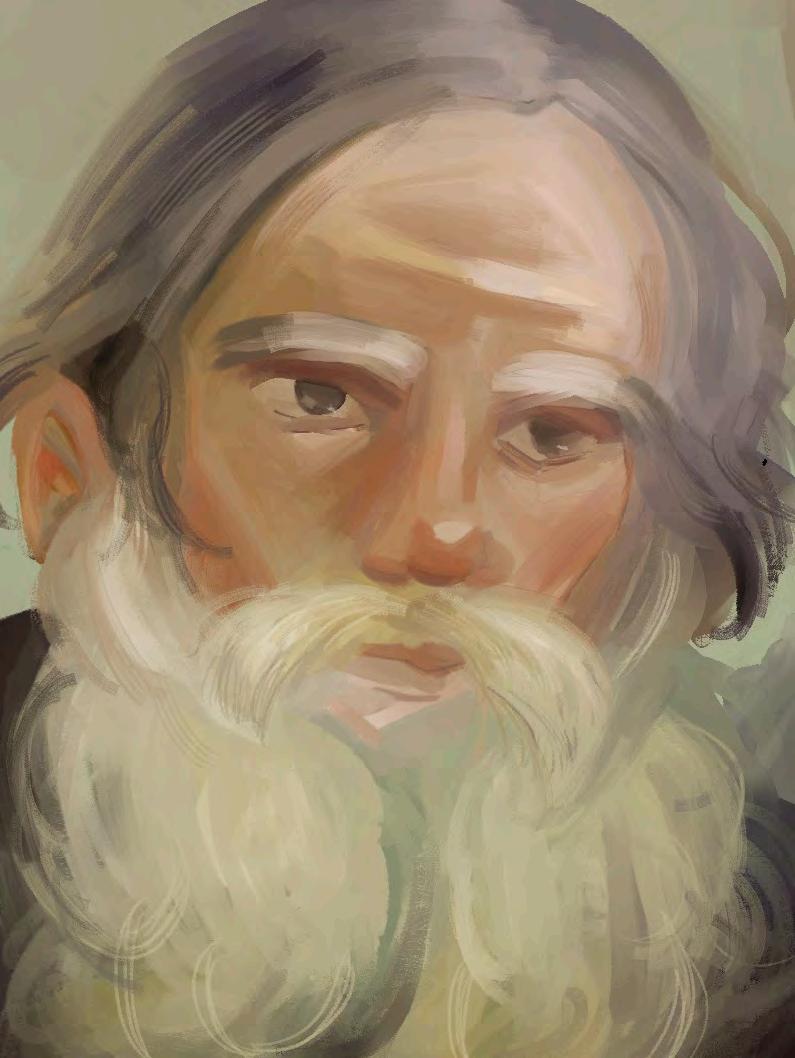
Tolstoy’s autobiographical essay Confession (1884) holds warnings and solutions for academic culture
52 The Varsity Magazine Tolstoy’s burnout
Writer: Anika Brigant
Illustrator: Zoe Peddle Stevenson

You are a converter that operates beyond definable boundaries. You, through experiencing events, convert time into the past. With that comes an unassigned, intrinsic responsibility to extract some sense of meaning or purpose from your experiences. However, we do not need to understand the meaning of living to live, just like we don’t need to understand the source of ingredients to understand that bread is food and tree bark is not. Despite its tendency to lead us to dysfunctionality, we keep searching for a sense of purpose, or, on the other hand, we dissociate from living entirely.
All Leo Tolstoy — the Russian author who wrote Anna Karenina (1878) and War and Peace (1869) — wanted in his youth was to be a good person. Through writing, he sought to pursue the goodness he felt he was destined for. However, at 51 years old, having been considered an accomplished poetic genius, Tolstoy was put in a unique position that pushed him into a crisis — despite becoming what he had dreamed of becoming, he was still unfulfilled, and his life felt alarmingly meaningless.
Tolstoy wrote about his journey in and out of an existential crisis in his autobiographical essay Confession (1884), which was published six years afer Anna Karenina. Tolstoy starts the essay with a description of his formative years as a scholar and fiction writer — the scene depicts a man caught in the sublime wave of ambition imparted onto youth who feel that they are part of something. In those days, Tolstoy believed it was “necessary for the good of mankind” to “speak, write, and publish as quickly as possible and as much as possible.” In Confession, he encapsulates his adolescent belief in one word: “progress.”
However, there were inevitable moments when the sublime waves crashed, and Tolstoy had to confront these reflective lulls. When he did pause, he found an increasing lack of meaning in his progress — whatever shore he was headed for remained illusory. When the waves would pick up again, Tolstoy found his activities were becoming “burdensome” and “repugnant.” This progress toward an undefined goal was insuficient to veil his exhausted motivation: “My deeds, whatever they may be, will be forgotten sooner or later, and I myself will be no more. Why, then, do anything? How can anyone fail to see this and live?” When Tolstoy put his goal of “progress” under a magnifying glass, he discovered a lack of definable meaning within it. In trying to find a truer goal, Tolstoy could only find nihilism — how can you find a purpose for a
structured life that loses meaning once you zoom out?
This is a well-worn road that modernity has paved. For some, this pursuit to define a purpose will end with a degree — you become a chemist, spending your life deducing reactions that seemingly give purpose; you become a cinematographer and try to capture some comprehensible spark of reality; you become a philosopher and sit across from mediocrity, hoping to understand the life you subconsciously know. For some, it may seem that this path will end with retirement, with the achievement of security and permission to rest afer a fulfilling career. Others may have already convinced themselves that they are of that road and life has no meaning beyond them, like Albert Camus, living for the absurd.
“To me, the tension between a writer like Tolstoy and literary society resembles that between the academic and academia.”
As university students, we have positioned ourselves in an institution that is infinity’s zealot, whose main function is to ask questions and then unendingly challenge the answers. It is a forum that fuels a constant state of inquiry. In whatever department they find themselves in, an intellectual can’t help but align their values with the pursuit of boundless knowledge.
However, a vital distinction between the two pursuits is rarely recognized: the paths of academics — pursuers of knowledge — and academia — institutional knowledge — are in alignment but are not the same. A failure to diferentiate between the two — to not have your own achievable academic objective — is the siren of ill health.
To me, the tension between a writer like Tolstoy and literary society resembles the tension between the academic and academia. As Tolstoy discovered, progress without purpose is a recipe for burnout. His fall into nihilistic thought resulted from pursuing goals that never came to fruition. Yes, there is comfort in the falsehood of permanence, of being part of something bigger than you. Tolstoy, too, found this comfort in the “delusion” and “influence of success” provided by art and literature: “I had persuaded myself for a long time that this was something that may be done in spite of the approaching death that will annihilate everything — myself, my work, and the memory of them.” Tolstoy felt that if he aligned his success with his pursuit
of goodness, his accomplishment of a neverending legacy would be indicative of a moral achievement.
This, he realized, proved to be a false association. If one seeks fulfillment in the infinite pursuit of progress, to form a link to some sense of purpose or permanence, one will encounter the same crisis that Tolstoy found himself in. Tolstoy wanted a legacy, and he got one, and only afer did he understand how impermanent such fame was. Ultimately, Confession does us a favour by highlighting the distinction that so many of us blur between academia and being an academic by showing this tension between a writer and his success in literary society.
It also points to alternative approaches to study. To escape his crisis, Tolstoy recognized that he could not find meaning through studying infinite knowledge as an individual. He eventually turned to faith because it provided a link to the infinite, allowing him to accept his ephemerality. I am not religious, but I still find credibility in faith as an answer. For Tolstoy, everyone must have a “diferent, more genuine concept of faith” if it is to be the answer to the “eternal question” of the meaning of life. In Tolstoy’s case, adopting religion “returned [him] to the conviction that the single most important purpose in [his] life was to be better.” In faith, he “discovered a feeling that helped [him] to endure… a feeling of self-abasement and humility.” Faith gave Tolstoy a sense of self-respect that allowed him to be satisfied with pursuing goals that had limits. It also allowed him to accept that someone in the future would eventually surpass those limits.
If we are to adhere to a path that takes us towards external success — to careers, degrees, financial security, and more — we must first accept that conclusive satisfaction is impossible within a societal structure of infinite growth. However, that doesn’t mean you shouldn’t seek self-improvement; you just need to do so within your own system of “faith” — one that allows the pursuit of humility and unbridled acceptance of where you are now to concur with the pursuit of external accomplishment. You can freely choose to head down a path of maximized responsibility, achievements, and agency, but there will always be more to do and more to satisfy.
It may seem unfortunate, and probably stressful, that you limit your own experience, but in the end, I think whether you find sustained fulfillment depends on defining your boundaries without defining the boundaries themselves.

Winter 2024 53 Flame
Birthday present

“A partner in your sorrow’s mysteries; For shade to shade will come too drowsily, And drown the wakeful anguish of the soul.”
— John Keats
I.
Grandma used to knit me bucket hats which Covered the hair mum said I inherited from her. She knew that I watched superhero movies, and that’s What she’d tried to knit. Ofen a sword I’d get, and she’d give a smile to mum.
Grandpa gave me envelopes with decorated rupees; Notes of colour I’d never usually see. Green of, like in dad’s wallet. He’d never tell me where he got the envelopes from, but seeing Superman on it I was elated.
He would give me a snug hug, and in his kisses I’d see the love of my granddad.
Auntie and uncle would shower me with chocolates, Those they’d get from their vacations to the States. They’d give me the currency which would buy my peers’ attention, But through all it would be mum and dad in tears.
Mum and dad smiled through these sprees, And did not confiscate my absurd demands — Can I have three video games please? And dad would show of the green notes, for me to be pleased.
There would be the cake I adored, customized with the Justice League’s icing, With the temporary embers of candles — Make a wish, Still a child, for more games and toys and chocolates, I wished.
II.
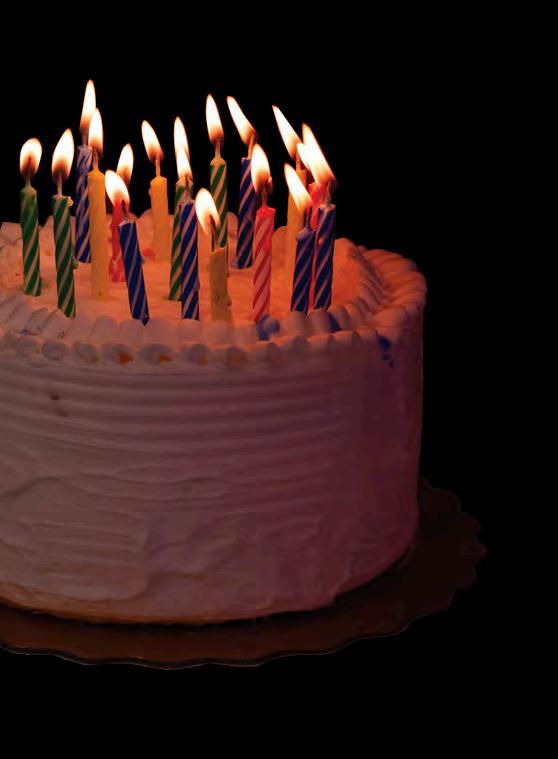
On evenings of, would receive the company of squeaky misfits, Those born on the cots months apart, for me who sits Before an assortment of attention and sweets; a lineup for me to remember, On the third day of December.
In Toronto today the misfits called me not, Demanded I not for the lineup, but the anticipation saw me fraught. Awoken only by the trafic’s congestion, And to empty inboxes, with investment suggestions.
III.
Dozed afer a call with grandpa, grandma, and their disciples, Received I not the hats, rupees, chocolates, or games. But thought I’d receive my misfits, Apparently dozing themselves, their calls burned in flames.
Wry in my morning hunger, Knew not whether to get cofee, to awaken myself And escape my slumber.
But there weren’t to be any cakes with chocolate, Nor the currency for me to flaunt, The embers from history would of ofer me a taunt, As they tickled my nose and my lips they’d berate.
But grandma always told me she’d shun any daring wick, And in the evening with my misfits, I’d forget the wick’s trick.
I knew what I’d wish for today, But there’s no candle ofering me the flame, And no ember, which is all I can blame.
54 The Varsity Magazine Birthday present
Writer: Devarya Singhania
Photographer: Averyn Ngan
Kindling & rekindling trust

The struggle to fnd safety in a patriarchal society
Winter 2024 55 Flame
Writer: Claire Gordon Illustrator: Jessica Lam
Content warning: This article discusses rape and sexual violence.
The first time I ever felt genuine anger was when I witnessed my friend crying over the phone while processing that her boyfriend had raped her. I was in Toronto, staying in residence at the Chelsea Hotel, when she video-called me from eight hours away. At the moment, I was shell-shocked. I listened to her vent and tried to be there, without actually being able to be there
I went to bed after the call feeling surprised at my lack of an emotional reaction. When I tried to fall asleep, however, I suddenly felt exposed, alone in my room. I’d always felt safe before, but now even the deadbolt and chain lock on the door felt flimsy.
As the minutes passed, I felt the most intense anger that I can only describe as complete rage building up in my body. It was anger directed at my friend’s partner, anger at myself for not being there for her, even anger at the locks on my door and at the very fact that I was so angry. I was shaking so hard I felt like I was seizing. I spent that night locked in my room, locked in my bed, locked in my body, screaming and screaming and screaming inside my head for some outlet for my rage, for some safety that I felt had just been stripped away from me as well.
I remember waking up the next morning with that all-consuming rage still burning through my entire body. I’d known the statistics for a long time: around one in six women are raped in their lives, and girls aged 16–19 are four times more likely than the average population to be raped. Despite having known those facts, I felt like my world had been fundamentally rocked.
For the first time, I felt those numbers clinging to my body, burrowing their way deep under my skin. I thought it was inevitable that I would become one of those statistics.
It was suffocating. I felt the weight of my anger itching to lash out against something every single day that year, but I had nowhere to put it. In the back of my mind, I actually started wishing that somebody would try to rape me so I could either use them as a morally justifiable way to vent all of my anger that I had been carrying, or so they could overpower me and I could at least get the intolerable waiting over with.
In popular psychology, anger is understood as a secondary emotion, meaning that it often masks some other underlying emotion. It’s certainly true that at the core of my anger was fear. I understood well that most women who are raped are victimized by somebody that they would have previously trusted, even family members, intimate partners, or friends. Eight out of 10 rapists,
in fact, previously had some sort of relationship with the people that they raped. So even more than I was afraid that somebody would violate my body, I was afraid they would violate my trust.
Ironically, when I later realized that I was also one of the 1-in-6, some of the fear of not knowing how long I would have to wait was calmed. However, I started seeing his behaviour reflected in other people around me — especially men. At the time, I refused to let anyone close to me out of fear that they would also try to take advantage of me, and that I would have to grapple with the impact of having handed too much power to the wrong person, not just once but repeatedly. I became another one of the 37 per cent of rape victims who now found it hard to trust other people. Imagine that.
Scaling the walls of anger
My relationship with anger as a woman has parallels with bell hooks’ concepts of objecthood and subjecthood. She argues that objecthood is a state where one’s being “remain[s]… defined and interpreted by others.” In contrast, subjecthood generally consists of selfdefinition coupled with collective political action.





Kindling & rekindling trust

The anger rooted in fear that I felt created objecthood disguised as subjecthood. I felt like there was so little escape from the sufocating, omnipresent patriarchy around me that I was willing to give up all the power I had that could oppose that structure. I even struggled to do something as small as read authors like bell hooks because her work articulated a pain that was too strong and too fresh.
At the same time, my anger sought too much control over my life. Under the banner of ‘keeping myself safe,’ I became so defensive against the people I met that I was unable to form any relationships that would allow me to heal. Even though my anger taught me to demand better treatment and leave dangerous situations, it ultimately paralyzed my healing and isolated me from others.
I have since learned that I tend to feel anger when someone oversteps a boundary or violates my space. Anger lets me know that if I do not hold boundaries for myself, it will enforce them for me, either by lashing out or turning away from the situation. However, if I consciously choose to enforce a boundary myself, the anger I feel fades away. I clung tightly to my anger for years because I believed that preventing myself from being
attached to someone who might hurt me was a source of strength and protection.
“I spent that night locked in my room, locked in my bed, locked in my body.”
Fighting against isolation
person had the opportunity to. I was not able to heal while I was always looking over both shoulders, as if I was playing a real-life game of chess where a friend or partner might turn on me at any moment. While I have had the agency to choose, for the most part, who I engage with, some of my most important healing has come from having healthy relationships with other people in my life.
I also think it’s incredibly important to point out that I am still angry that I don’t have any guarantee of safety unless more people step up. Eight out of 10 rapists had some relationship with the person they raped. I want to keep reiterating that statistic because, at the end of the day, I cannot, as bell hooks puts it, “be liberated solely by making right choices.” She emphasizes that intimate partner violence is particularly damaging because it is in close relationships that we should be able to share our vulnerabilities without the risk of them being used against us.
As I am learning what it means to find subjecthood, I am gradually letting go of that original anger and fear in exchange for some cautioned trust. bell hooks — and my therapist! — ofen argue that healing is found in both everyday and political communities. Healing is not an individual’s ability to be whole in a vacuum but, as hooks argues, “the coming together of many ‘I’s.” This includes others like family, friends, and local community, as well as pieces of one’s history and present. When my anger distanced me from people I thought would harm me, it protected me. When my anger made me distrust every person that I met, it harmed me first, even before another
I have been lucky to have found people who give me that space. Without it, I would still be reacting to other peoples’ actions, alone, while struggling to continue carrying the full weight of my anger.




Winter 2024 57 Flame
Chasing embers
Writer: Max Zhang
Visuals: Jishna Sunkara & Max Zhang
Iwant to rule the world.
That is the unspoken principle that has guided — and eaten away at — my life. For as long as I can remember, I’ve lived with the paralyzing fear of being lazy. In my mind, it has been enshrined as the most cardinal sin. Seeing the attitude against laziness in those older than myself, traditionally thought to be role models, and hearing the disparaging judgments of those I respect, condemning laziness as the greatest failure, I could only internalize those critiques and strive, above all, to never be vulnerable at their hands. There are days, hours, or sometimes only fleeting moments in which I have a true grasp of my reality.

When I am the unequivocal arbiter of my actions, when focus is natural, when the words spill out of me like a broken dam, beautiful in prose and eloquent in mechanical reasoning. When work is comfortable and success is natural, almost certain. In other moments, I find myself unable to marshal myself out of bed, unable to put pencil to paper, fingers to keys. Dissatisfied with every hardfought inch of progress, every painful letter or belaboured equation. Unable to stoke motivation, what else am I to do? All I have lef are the sparse embers to huddle around, and I strain meagre progress from every last spark. Perhaps I am broken I sleep a lot. Maybe I’m depressed. I clocked 15 hours a few nights ago, and 13 soon afer. I think 10–11 hours every night would sustain me. I asked my roommate how much he needed; he described a comfortable schedule with eight hours of sleep. I quickly did the math
and mused that, since I need 10, I would need to be 14 per cent more productive every day just to match him.
He was taken aback by how I thought about it. Why did I think about everything in terms of work?
It was simply how I was raised. It was by no means a conscious efort from my parents. Surrounded by high achievers and a constantly rising ceiling of incremental academic excellence at school, it seemed inevitable that I would become the stress-compressed, success-fuelled, academic machine that I was. In that world, nothing was ever enough. My parents actually only wished for my happiness, but their support and care for me only made me want to make them proud.
Some days, I plow forward through my work, spurned on by a great fire in my heart. Other days progress feels painful and slow, the belaboured embers of dying sparks. The worst days are those when I lie down at the end, unable to sleep, burning with the passion to succeed yet cringing at the heat of shame rising in my cheeks, regretting each moment I didn’t do more as I reflect on an unproductive day.
Most of my conscious life has been spent in service of this — the ever-rising ceiling of success. As I entered high school, the game began. All I began to know was the meaningless pursuit of an onslaught of endless tasks in service of abstract goals: AP tests and increments of GPA, academic awards, and summer positions. Day in and day out, the oppressive weight of pursuing success bore down, sufocating me under its inescapable presence regardless of how well-stoked the fire in my heart was. Month afer month, semester afer semester, year afer year, until one day we donned our graduation attire and dresses and poof! The ever-advancing ceiling gave way to an open sky. The weight of it all disappeared, the fire of motivation was open to wax and wane as it pleased. I felt so lost but so… free.


What was it that I used to fight so hard for? I
found myself approaching the days with carefree abandon. I built an Adirondack chair in my first days of freedom, starting when I wanted, stopping when I wanted, and watching my work grow to fruition. I did what I wanted and went where I went, driven for once by my heart and not forced to be the driver of it. I was no slave to
“I
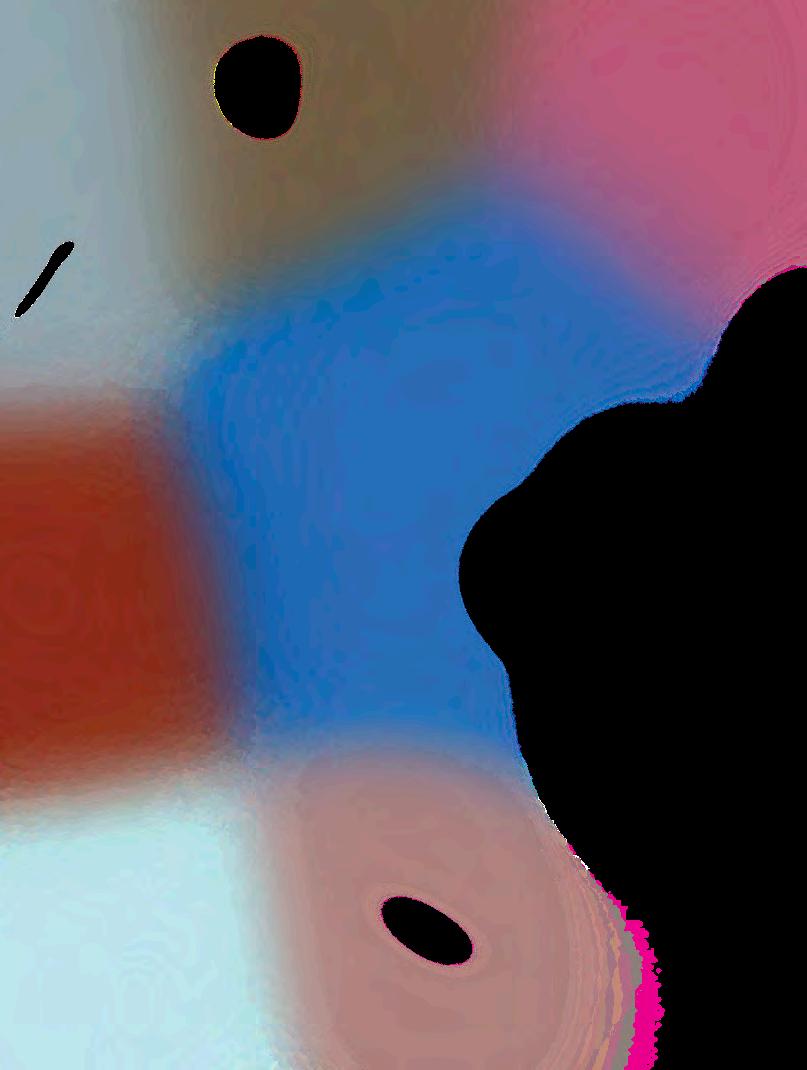
the motivation that dictated my pace, the aim was true so the pace was of no consequence.
I found myself carefree. One day, I was sitting on a dear friend’s porch, weather-worn with its white paint and creaky screen door. I had never spent much time in that frankly large neighbourhood within my home city. I lived a few suburbs away on the other side of the city, and I had never felt like a person until I went there. It seemed the first place I approached as an adult, a person with volition, as someone there to simply be there and see whatever is presented, with no expectations, no motives, and no notions of obligation. I stared out on the warm summer day and felt the breeze brush my face. I heard the wind chimes chirp, and I can still see the ginkgo leaves twirling down to pepper the lawn. I never knew I could be so happy.
A life dictated by passion is one truly worth living. Months before that wonderful moment, I visited Death Valley National Park in California with my family. My brother had wanted to see the stars, hearing they were the clearest there at night. In the gentle sand dunes far from the nearest skyscraper or suburb, whose grains are


so fine, they slip into your socks unnoticed because of their sofness — where the stars we drove for four hours to see, through valleys closed in by stormy clouds, through open country and mining towns, freckled the gentle sky, poking through the wily wisps of the passing storm. We lay there in the dark, aware of other families with their distant flashlights but alone in our own world.
There was no great relief to me then, only quiet in the pause from the machinery of work. It was a tense time in my life, situations untenable, dread creeping in. I thought about a relationship of mine that was nearing its natural yet unwelcome conclusion — a relationship that, deep down, I knew wouldn’t work from the start. I thought about all the cracks in the façade I saw then in every dimension of my life, all the dissatisfactions and shortcomings clear in retrospect, all the telltale signs that I’d turned a blind eye to.
I grabbed fistfuls of sand and squeezed hard, trying hard to retain my grip on what was falling away from me. The sof sands slipped through, in all the places I wasn’t present, in all the ways I couldn’t control. Hand afer handful, I tried, feeling the time gently slide out of grasp the harder I clenched, the silently sufocating grains quietly returning to their place in the dunes, maybe not to be felt again for a million years, perhaps never, destined to outlive us all until we too return to sand.
I think about these beautiful moments in my life, the calm within the storm among the dunes, the far-of levity on the porch and in the breeze. The day on the porch felt like a lifetime ago, worn down by the returning stresses so familiar to me, in which I performed and excelled. The joy doesn’t feel real anymore. When it first started to slip away, I tried to grasp it, tried to hold onto the sensation, the flame of happiness that I so desperately wanted to keep but eluded me and slipped away, mufled in the dunes. I won’t lie: I am only lef with a perception of the sensation, an abstract to which I aspire.
Holding onto time is futile. The present is temporary, for better or worse. The future is uncertain. I want to imagine another day on that porch, away from the waxing and waning of the fire to succeed, comfort-
able in the joys I know and the pace nature sets. But I know now that it is out there, and I will find it again. Maybe I’ll need to stoke the fire of motivation along the way, but lying against the sands I cannot control, I know there are stars beyond the clouds.

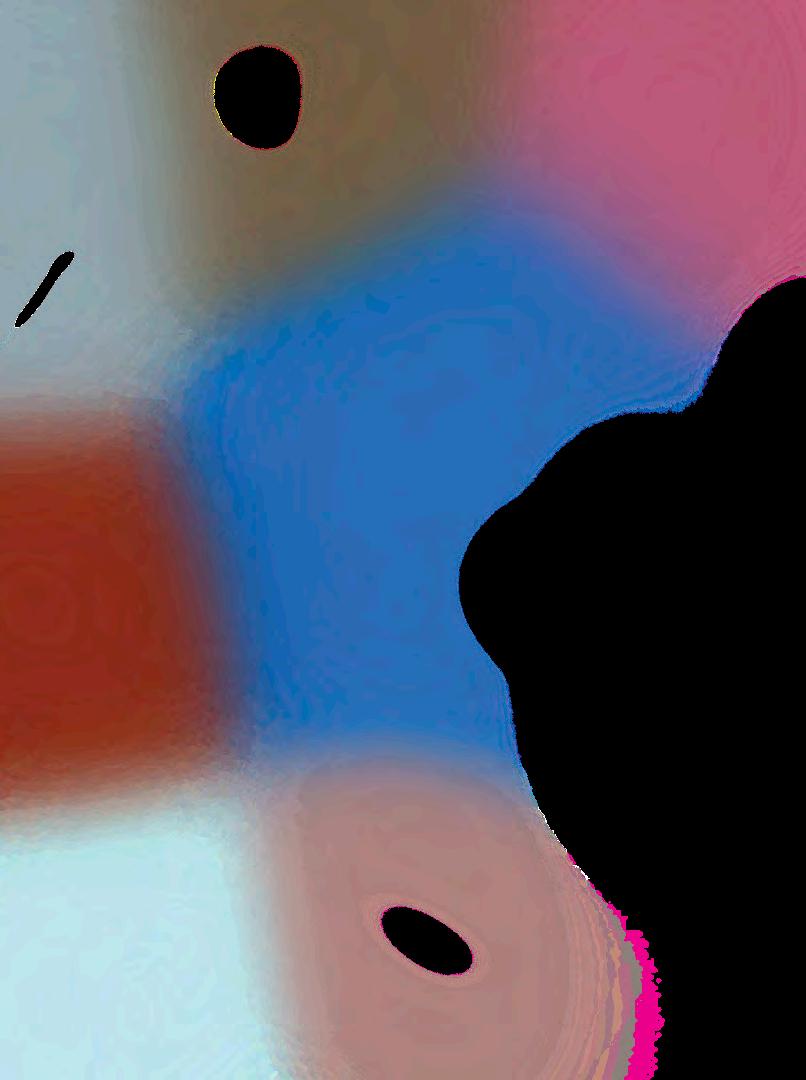

Flame Winter 2024 59
Live,laugh,
love,lithium
Losingmymindand gettingalife
Writer & Illustrator: Andy Zhao

Content warning: This article discusses mental illness, suicide, and substance use.
To be honest, the worst day of my life wasn’t even the worst day of that month.
At around six in the morning, on a midDecember day during my second year of university that was otherwise unextraordinary, I woke up to the harsh white glare of fluorescent lights and a quiet, mechanical beeping noise. An intravenous line of clear solution — saline, I would later find out — was attached to the back of my lef hand. I looked down to find that I was in a papery blue gown, which I didn’t quite remember putting on, and that my body was covered in round electrode plasters attached to thick yellow wires coming out of some kind of machine, which I could only assume was a heart monitor.
For the hour or so that followed, before any of the staf realized that I’d come to my senses, I made myself lie flat and still on the hospital bed — solid, cool, and plasticky — filling my head with the chatter of the emergency department and the static buzz of the hospital intercom, desperately trying to suppress any memory of the night before.
Not unlike the worst clichés about the best
parties — the only ones worth sneaking out for — my recollections came back in waves. It was late at night, two or three in the morning. I had finished exams for the term as far as I could tell, and if I hadn’t, I couldn’t find it in me to care. On a sudden whim, in a strangely calculated manner, I’d acted on one of the many self-destructive impulses that I’d dwelled on for years, and I’d lose two and a half days of my freedom because of it.
I’d been diagnosed with type 1 bipolar disorder in the summer of that year, and I revealed as much to the psychiatrist who eventually questioned me later that day. An ill-fated trial of sertraline, which I’d been taking to try and calm my anxiety, eventually resulted in a manic episode. For about 10 days, I slept no more than three or four hours a night, if at all; sustained myself on a few grapes and crackers a day; and convinced myself I could speak Norwegian. I raced down streets and highways on my old city bike, daring a car to run me over. I would have set myself on fire to watch the world around me burn. I had never felt so consumed, so reckless, so relentlessly and hopelessly alive.
This particular manic episode subsided afer I stopped taking sertraline, but another one soon followed in the fall of that year. It was my
second year at university and my first away from home. I’d been prescribed lithium — a mood stabilizer — during the summer.
I’d been good enough at taking it mostly every day for those summer months, while I was bored out of my mind in the depths of suburbia, but I’d been feeling a bit better when I got back to school. I thought, quite foolishly, that I could stop it entirely, and nothing would come of it.
This nonconformance to my medication regimen, along with the thrills of my newfound freedom living away from my parents in downtown Toronto, proved to be a dangerous combination. I would eventually experience another manic episode, this time more heightened and long-lasting. I started — and lef unfinished — novels and television scripts and rock albums; I drank excessively, sometimes to forget, other times just to prove a point; I went running in the middle of the night until I could no longer feel my body from the cold. I believed that I was a façade of a human being, an unreal, nonexistent entity, detached from the physical realm — one that could never die.
At the end of it all, I almost did. But that’s a story for another time.
The fact that you’re able to read this essay means that the lithium ended up working,
60 The Varsity Magazine

probably due to the fact that I actually take it now instead of letting the medication vial collect dust on my desk. I’m sometimes amused by the irony that lithium — an element known for its volatile nature — is the gold standard treatment for an illness characterized by instability, but I guess I shouldn’t be shocked that life is full of surprises.
A flame that burns bright red Lithium came into popular use in the scientific field — including as a psychiatric medication — in the 1900s, but it is as old as the universe itself; many astronomers consider it to be one of the three original elements first synthesized in the Big Bang. Lithium is still found in stars, more ofen young ones, and is released into galaxies during classical novae: astronomical events in which bright, seemingly new stars suddenly appear in the sky. Here on Earth, elemental lithium does not exist in its pure form due to its volatility; instead, it is found as part of compounds in minerals, and must be isolated and purified before it is to be used. The discovery of lithium is a fairly recent one, occurring just over two centuries ago. In the 1790s, mineralist José Bonifácio
de Andrada e Silva discovered a new silicate mineral, petalite, on the island of Ufö in Sweden. The chemist Johan August Arfwedson, working in the laboratory of Jöns Jacob Berzelius, conducted experiments with the mineral in the early 1800s. In 1817, Arfwedson observed the presence of a then-uncharacterized element, with similar properties to the known alkali metals sodium and potassium. Berzelius named the newly discovered element ‘lithium,’ afer the Greek word lithos for ‘stone.’ Arfwedson then attempted to isolate elemental lithium from its compound form, as did the chemist Christian Gmelin, who observed that lithium salts produce a bright red flame. Neither was successful in their eforts, and it was not until 1821 that William Thomas Brande was able to isolate a small quantity of lithium by conducting electrolysis experiments using lithium oxide. It took a further 34 years for chemists Robert Bunsen and Augustus Matthiessen to obtain lithium in larger amounts, which they were able to do by conducting electrolysis on molten lithium chloride.
Over the next two centuries, lithium went mainstream, making its way into international battlegrounds, scientific breakthroughs, and everyday life.
The first widespread use of lithium was as a component of grease for airplane
engines in World War II, and during the Cold War, with vastly increased production of nuclear fusion weapons that used lithium-6 and lithium-7 isotopes, demand for the element soared.
Elsewhere in the twentieth century, lithium was at the heart of research in the fields of physics and chemistry — work which yielded results that altered the landscape of science and the everyday. John Douglas Cockrof and Ernest Thomas Sinton Walton won the Nobel Prize in Physics in 1951 for their work on inventing the particle accelerator, which they used to successfully split the lithium atom. Nearly seven decades later, in 2019, Yoshina Akira, John B. Goodenough, and M. Stanley Whittingham shared the Nobel Prize in Chemistry for their work in the development of lithium-ion batteries, now the most common type of battery used in electronics.
Lithium on the brain

Despite the many innovations and achievements which have made use of lithium and its varying qualities, how it works as a drug is still unclear.
Winter 2024 61 Flame
In the 1870s, physicians Carl Lange and William Alexander Hammond began to use lithium as a treatment for mania. Lange and Hammond both believed that the drug would afect patients’ uric acid and help them return to a steady state, a theory that has since been disproven. Although Lange and Hammond’s theories about the mechanism of lithium were incorrect, lithium therapies were fairly efective; however, interest in this particular field quickly
dwindled and lithium fell out of fashion.
Interest in lithium as a psychiatric drug was reignited in 1949 by psychiatrist John Cade and biochemist Shirley Andrews. When working at a psychiatric hospital, Cade and Andrews performed a series of experiments where they injected guinea pigs with the urine of patients experiencing mania. In these experiments, they found that lithium, when injected along with the urine, could confer a protective efect against the toxic components of urea and induce a lethargic state in the animals.
Cade tested lithium on himself, and seeing no detrimental efects, conducted a study where he gave lithium medication to a small cohort of 10 people that had experienced mania, with successful results. Lithium began to be more
commonly used as a treatment soon afer these findings were published. In 1970, the United States Food and Drug Administration oficially approved lithium for the treatment of bipolar disorder, and it is now classified as an essential medication by the World Health Organization.
In all its decades of efective and widespread use in treating bipolar disorder, the exact ways in which lithium works in the body are still unknown. Nobody has managed to elucidate the mechanism of lithium medication; there has been no superb breakthrough, no hope yet of a total cure.
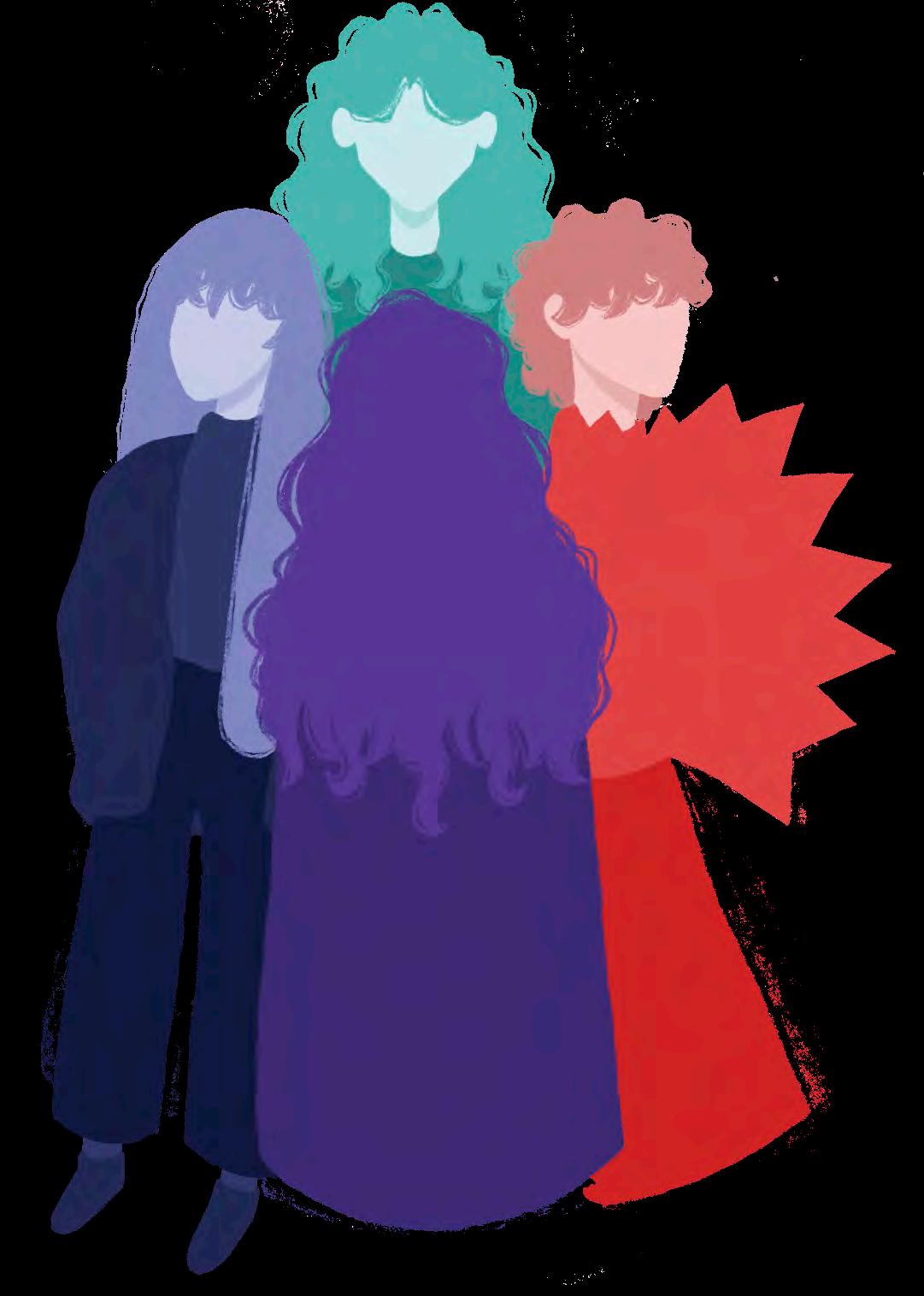
Slow, necessary changes
Like many other people, I was miserable in my teenage years. I experienced all the classical symptoms of depression: a profound melancholy, a hollow sense of apathy, and a cool disinterest in life in general.
I thought that my sufering made me unique, sophisticated, even enlightened. I wanted to believe that it gave me a more refined perspective on the meaning — or meaninglessness — of existence, so that there was some reason for it, in the end. I tried to convince myself that my indiferent, joyless life was the ideal way to live, but I knew that I desperately wanted to change. I wanted my life to be diferent, in some way, from what it was then, even if I believed I could never be content with it.
I became attached to historical figures who’d reportedly sufered like I did, keeping lists of what they achieved and particularly of how they died. Vincent van Gogh shot himself in a field. Virginia Woolf drowned herself in a river, pockets brimming with stones. In comparison to them, I was just an ordinary teenager with no accolades to speak of, but I found a warped sense of comfort in knowing that they shared my sense of unending despair — that across centuries and continents, we had been burned by the same flame.
It was a month before I finished high school when I first saw a psychiatrist. Nearly a year prior, in the previous summer, I had visited my family doctor for a routine check-up and had made a jumbled confession about my tendency toward instability, and had gotten a referral to a specialist as a result. It took over a year for me to get diagnosed, and another year and a half to get my medication regimen right.
This kind of timeline is not uncommon for those living with conditions like the one I have; people with bipolar disorder are ofen only correctly diagnosed five years to a decade afer the initial onset of their symptoms, and
62 The Varsity Magazine Feature — Live, laugh, love, lithium
finding a treatment plan that works could take even longer.
It’s been nine months since I started taking lithium again, and most days I am alright. Although I may not be exactly like my old self — whoever I was in the before times — I feel like most of a real person, which I’ll have to accept for now. I keep myself busy, filling up my calendar with classes, extracurriculars, sessions at the gym, and simple outings with friends, to keep the lurking chaos at bay.
It works well enough most of the time, so I try not to change things too much or too quickly. I’m no longer in the business of playing with fire, and I’m firmly convinced, if nothing else, that my newfound stability has been good for me.
An unfortunate side efect of lithium is the innate toxicity of the drug. Although the type of lithium medication prescribed nowadays is safer for use than it ever has been, it still comes with a long list of potential side efects: hand tremors, vomiting, headaches, and hypothyroidism. When I was prescribed lithium for the first time in my second year of university, I was constantly plagued with intense, nauseating vertigo and migraines that lasted for days on end. I’ve fared better this time around, but I still constantly ruminate on the damage that I take — however slow, however necessary — as I poison myself, 900 milligrams at a time, for a chance at a normal life.
The good news is that modern medicine says that I have options, if I want them. The other medications I’d been taking previously did a good enough job at suppressing the mania, even if they did very little for the depression. I could gradually taper of lithium if it really came down to it. Several other mood stabilizers have also become more widely used in recent years; valproic acid, for example, is another option that’s supposed to work for many people.
One day, I’ll probably have to pick between keeping my kidneys and keeping my grip on reality intact, and I might end up sacrificing one for the other. That feels like a highly unfair situation in which all I can do is lose, but I try not to think too much about it. I’ll deal with it when the time comes, decades down the line. In the meantime, I hold out hope, however small, for an even better drug than lithium to come along which won’t wreak havoc on my organs, or for some miracle treatment which provides a cure. I do my best to live the life I’ve been given, however, bleak things look at times. It’s the only life I’ll ever have, afer all.
in our lifetimes, ofen without a specific reason or cause. Some go through a period of illness and never experience another episode. Some recover and experience a relapse years later. Some will live with it for life. What’s absolutely true is that nobody, not even the most successful and content and beloved among us, can guarantee themselves a life free of whirlwind highs and desperate lows, of absurd beliefs and fantastical delusions.
Like many others who live with a chronic illness, I ofen grieve the life that I could have lived without it. I think about the instability and chaos that dictated my life for years, consuming me like a house fire, leaving those around me relatively untouched but helpless to do anything but watch. I reminisce on everything that I missed out on in my teens and early twenties, the days I spent asleep and the nights I spent awake. I also remember, now more than ever, not to take my good days for granted. I know from experience that life might get worse in a week from now, or tomorrow, or even later today. Life could also get better, much better, although I don’t dare to spark that hope anymore. It’s pretty likely that nothing will change much from now on, and I’ll be taking my three tablets of lithium a day for the rest of my life, or at least until my kidneys give out. I’m hoping that doesn’t happen, though, at least not for now.
Life afer lithium
I know now, for better or for worse, that I’m not in this alone. As many as 50 per cent of us will experience some form of psychiatric illness

This is a story about almost living, almost dying, and the not-exactlywonder drug that makes almost living almost possible. This is a story about science and society, loss and love, and all those other generic, overdone intangibles that actually kind of matter when you think about them long enough. This is a story about lithium, the ancient, volatile metal that bursts so easily into bright red flame but can be used to tame a fire, a story about the strange little element that saved my sorry little life.

And now that I’ve gotten to live a little bit more, I can only hope that it will be a life worth saving.

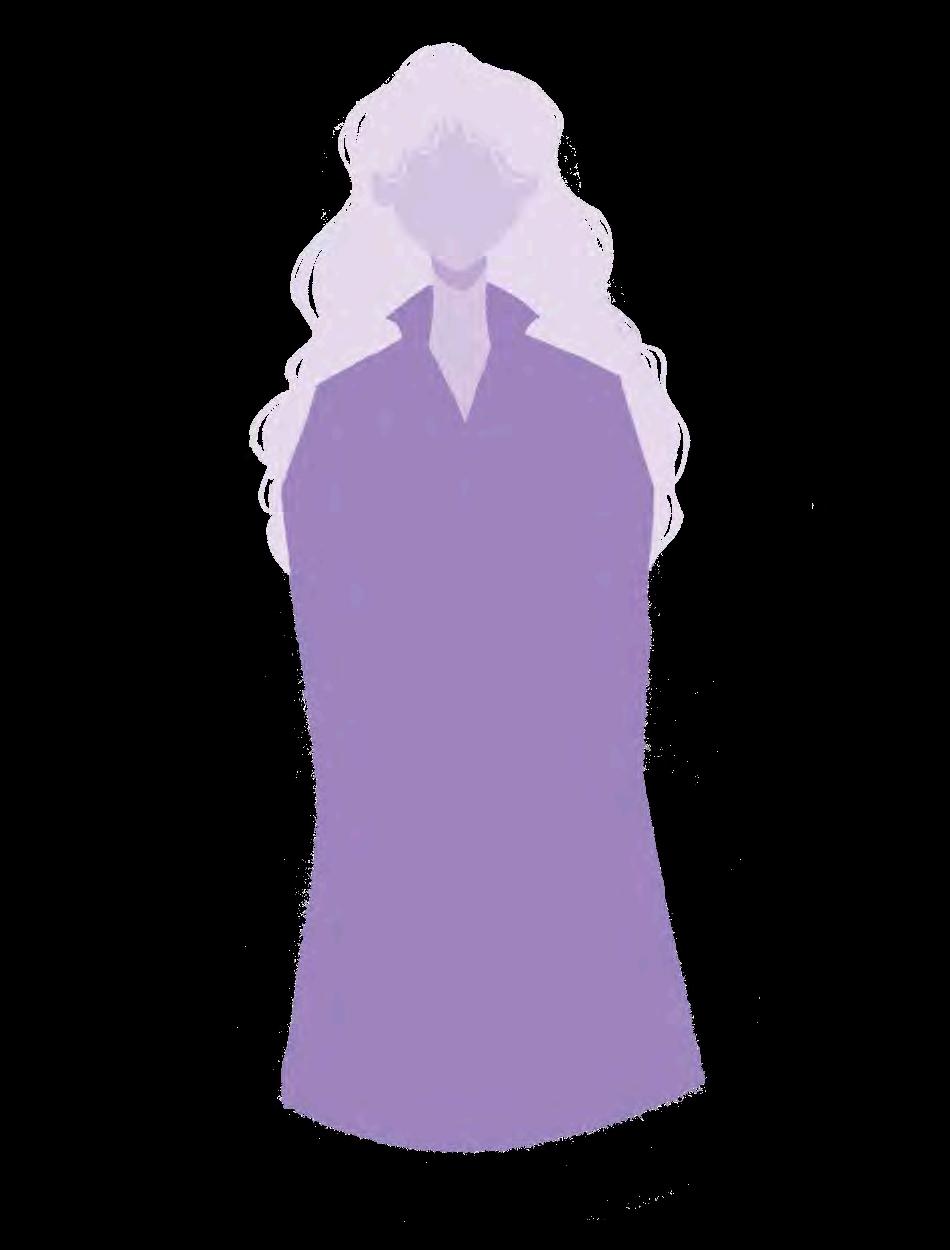
Winter 2024 63 Flame

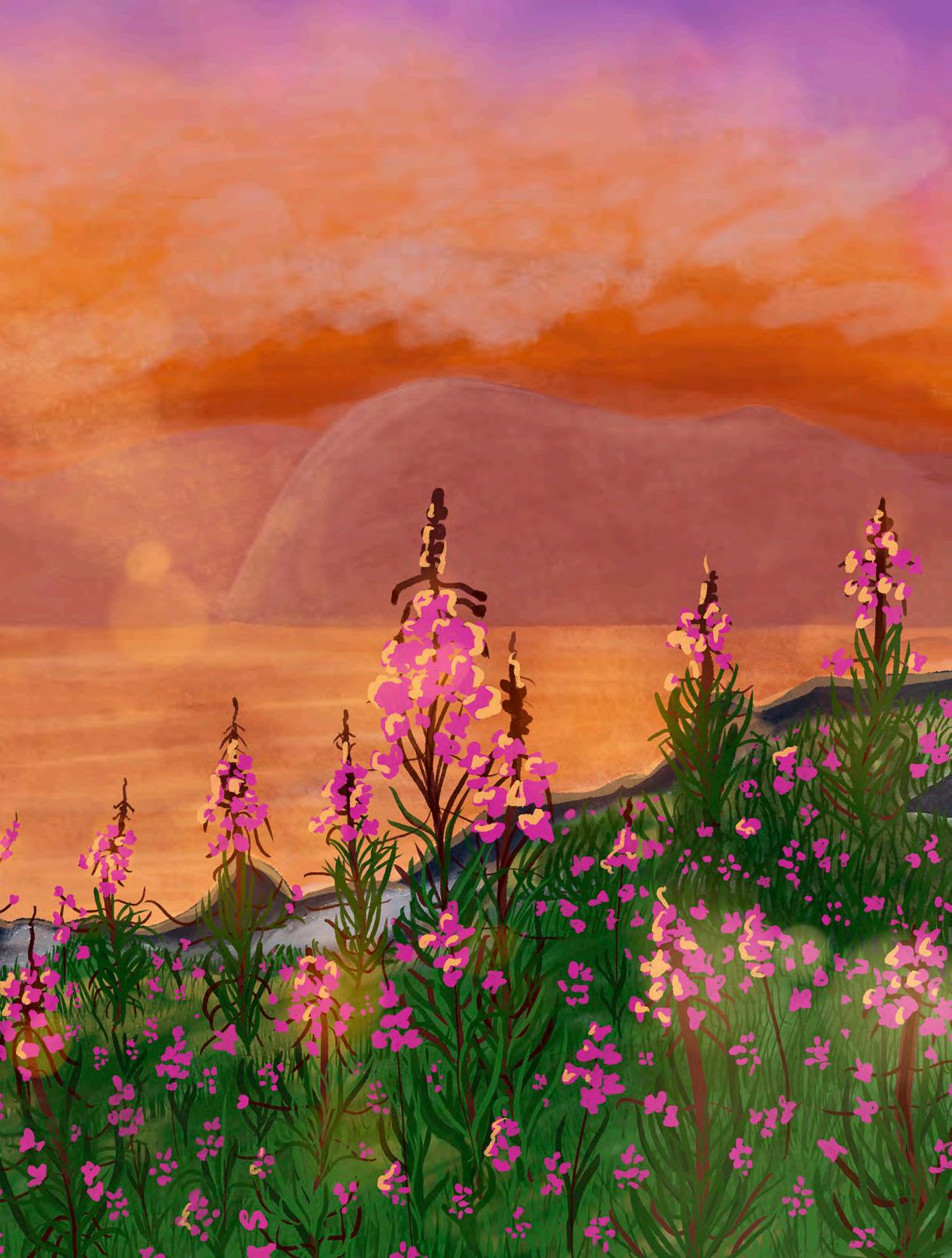
Magazine Editor-in-Chief: Alice Boyle Creative Director: Caroline Bellamy Varsity Editor-in-Chief: Sarah Artemia Kronenfeld Managing Online Editor: Mekhi Quarshie Managing Editor, External: Andrea Zhao Managing Editor, Internal: Shernise Mohammed-Ali Senior Copy Editor: Ajeetha Vithiyananthan Deputy Senior Copy Editor: Kyla Cassandra Cortez Design Editors: Arthur Dennyson Hamdani & Kaisa Kasekamp Illustration Editor: Jessica Lam Photo Editor: Zeynep Poyanli Magazine Assistants: Sophie Ramsey & Kyleeanne Wood Associate Senior Copy Editors: Ozair Chaudhry, Isabella Reny, Lina Tupak-Karim Associate Design Editor: Nicolas Albornoz, Catherine Doan Cover Art: Jessica Lam Endpaper Art: Arthur Dennyson Hamdani & Kaisa Kasekamp Letters from the editors photography: Zeynep Poyanli Copy Editors: Mehek Berry, Daniela Cernaz, Alia Eiras, Athen Go, Darya Kartalaei, Cindy Liang, Suchir Madhira, Theo O’Connell, Leah Pivato, Susan Sarwari, Margad Sukhbaatar, Medha Surajpal, Madison Truong, Nina Uzunovic, Quin Xie, Despina Zakynthinou Additional editing by: Caitlin Adams Special thanks to: Kaisa’s sunset lamp, to Kiki’s Delivery Service for helping Alice through the throes of burnout, to bonfires for helping Alice think of a theme, to Kaisa and Arthur for being so amazing at your jobs, to Sophie and Kyleeanne for keeping mag going even when Alice was hit with multiple plagues, and to The Varsity for helping us realize what we love to do. We hope you make something that keeps you going as much as mag has for us. It’s been real. The Varsity Magazine has a circulation of 4,000 published by Varsity Publications Inc. It is printed by Master Web Inc. on recycled newsprint stock. Content © 2024 by The Varsity. All rights reserved. Any editorial inquiries and/or letters should be directed to the magazine editor-inchief. The Varsity Magazine reserves the right to edit all submissions. Please recycle this issue afer reading. 21 Sussex Ave, Suite 306 Toronto, ON M5S 1J6 (416) 946-7600 flame.thevarsity.ca
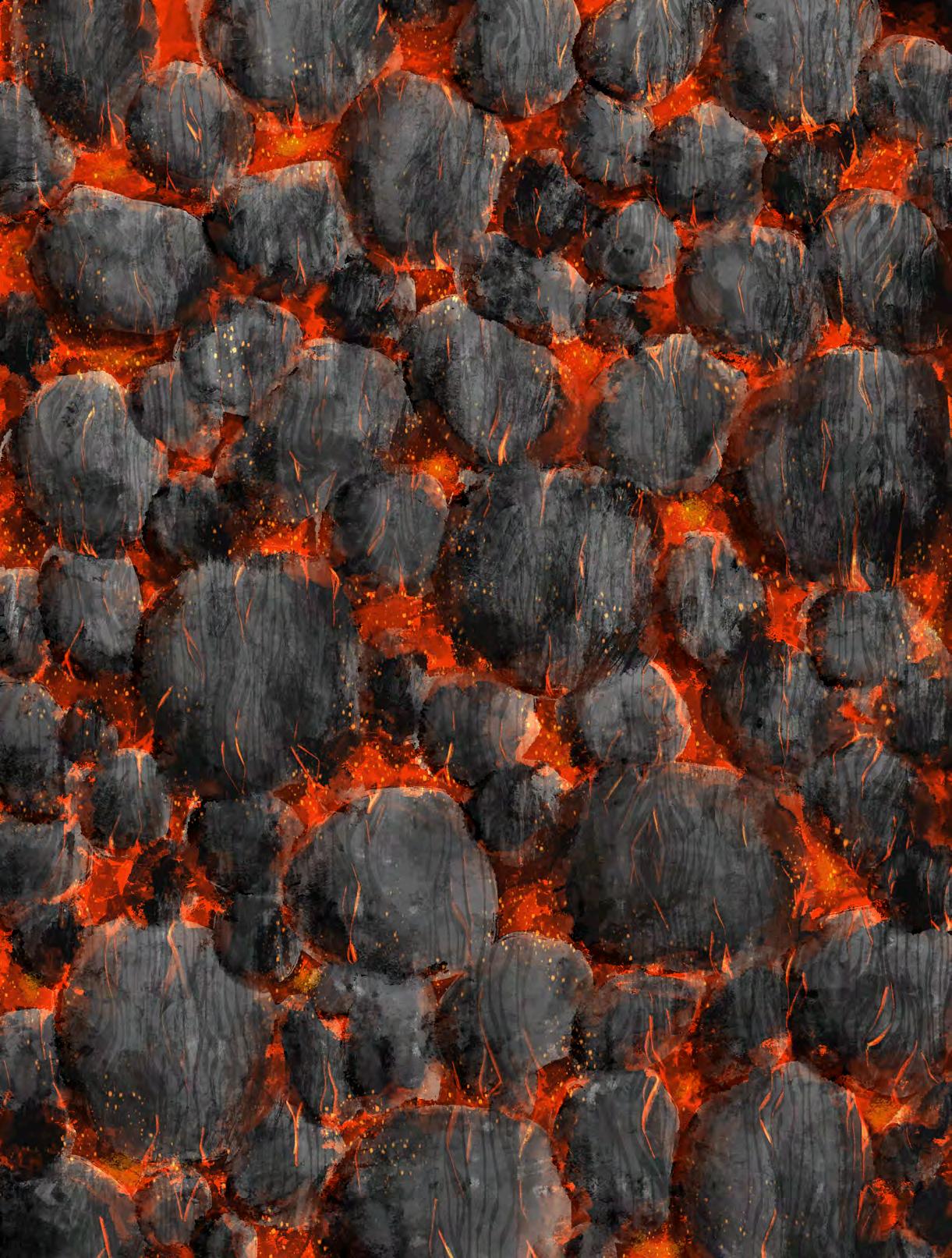

























 Writer: James Bullanoff
Illustrator: Medha Surajpal
Writer: James Bullanoff
Illustrator: Medha Surajpal




































































 Writer: Saf Shams
Writer: Saf Shams



































